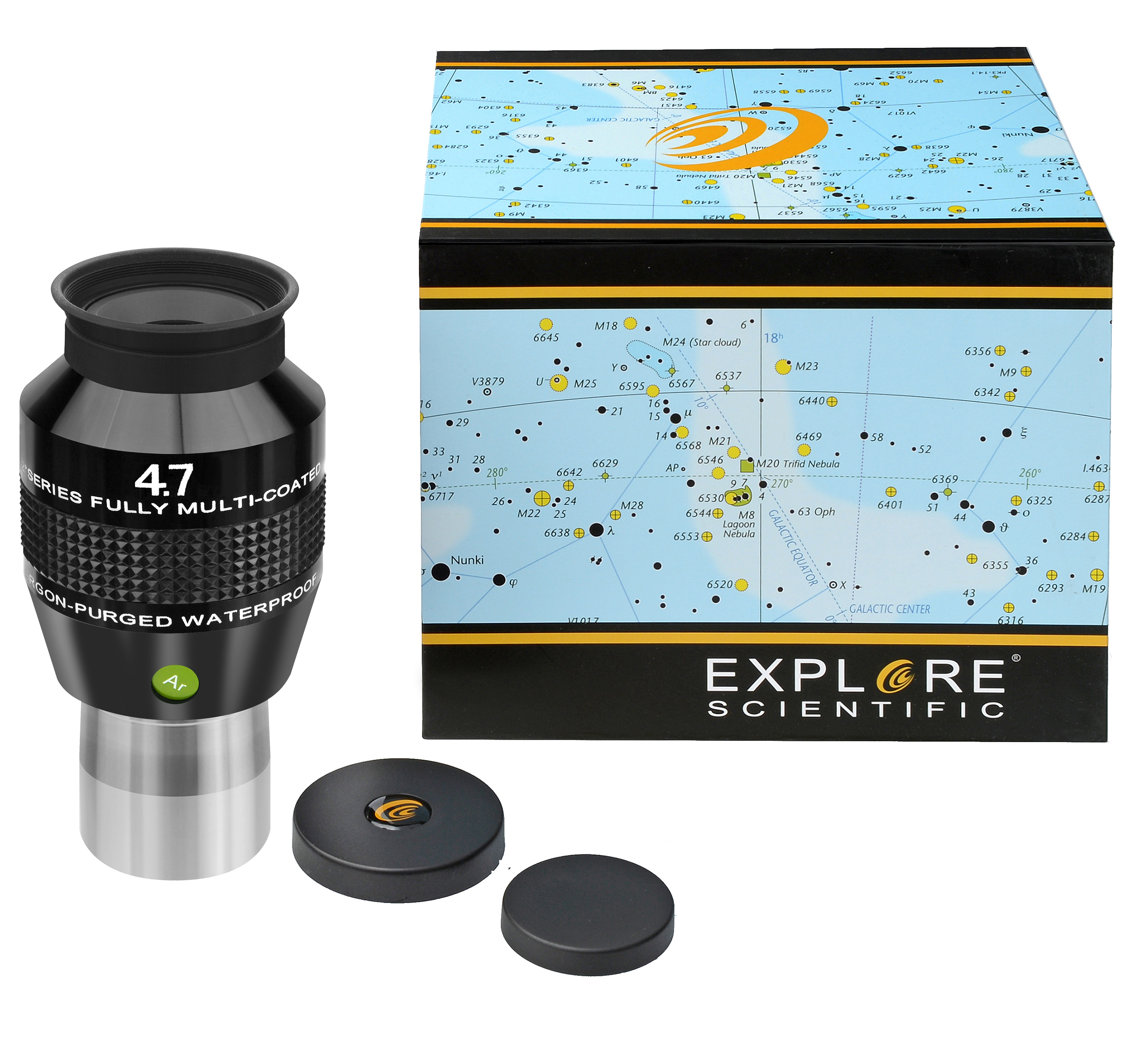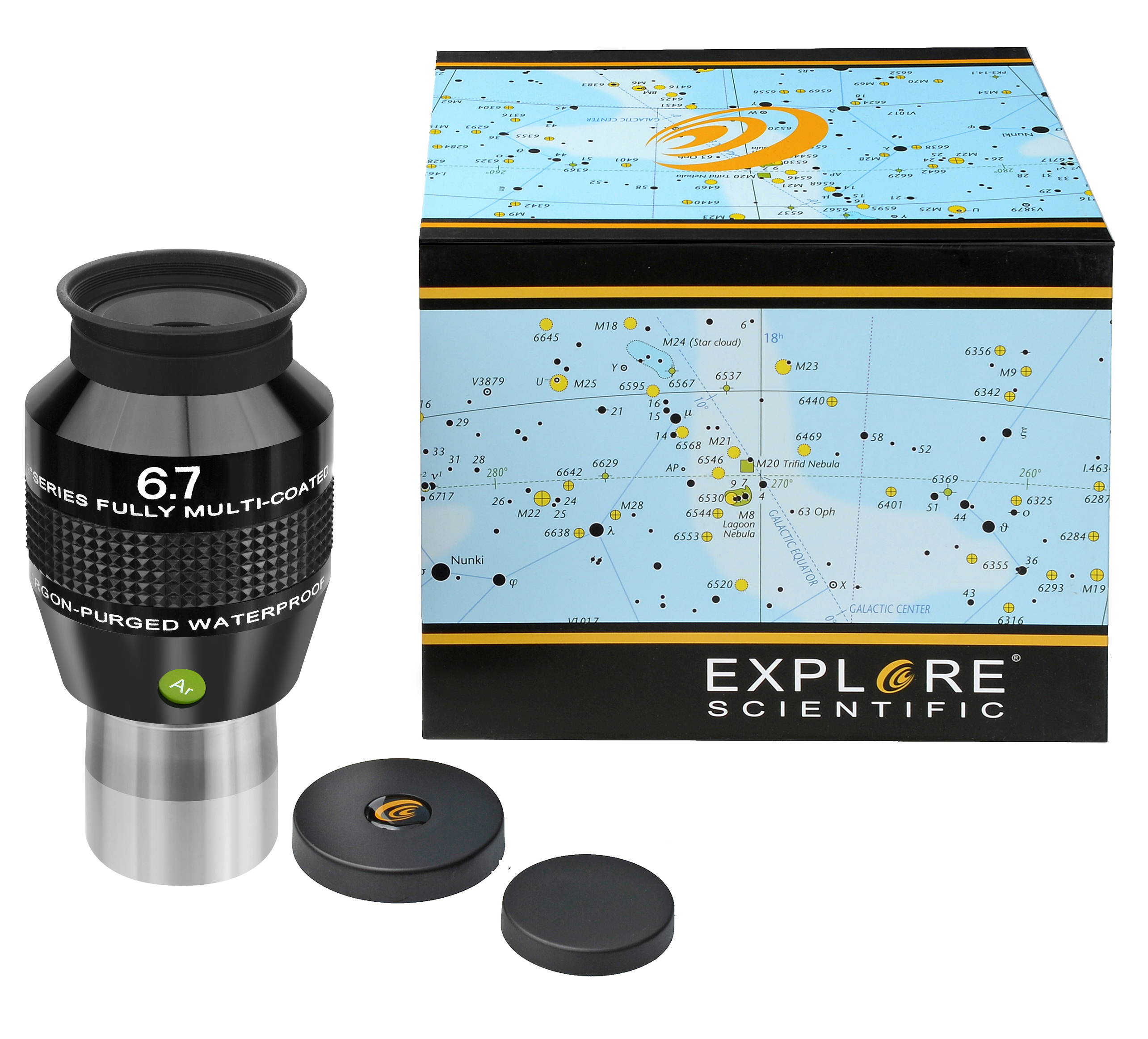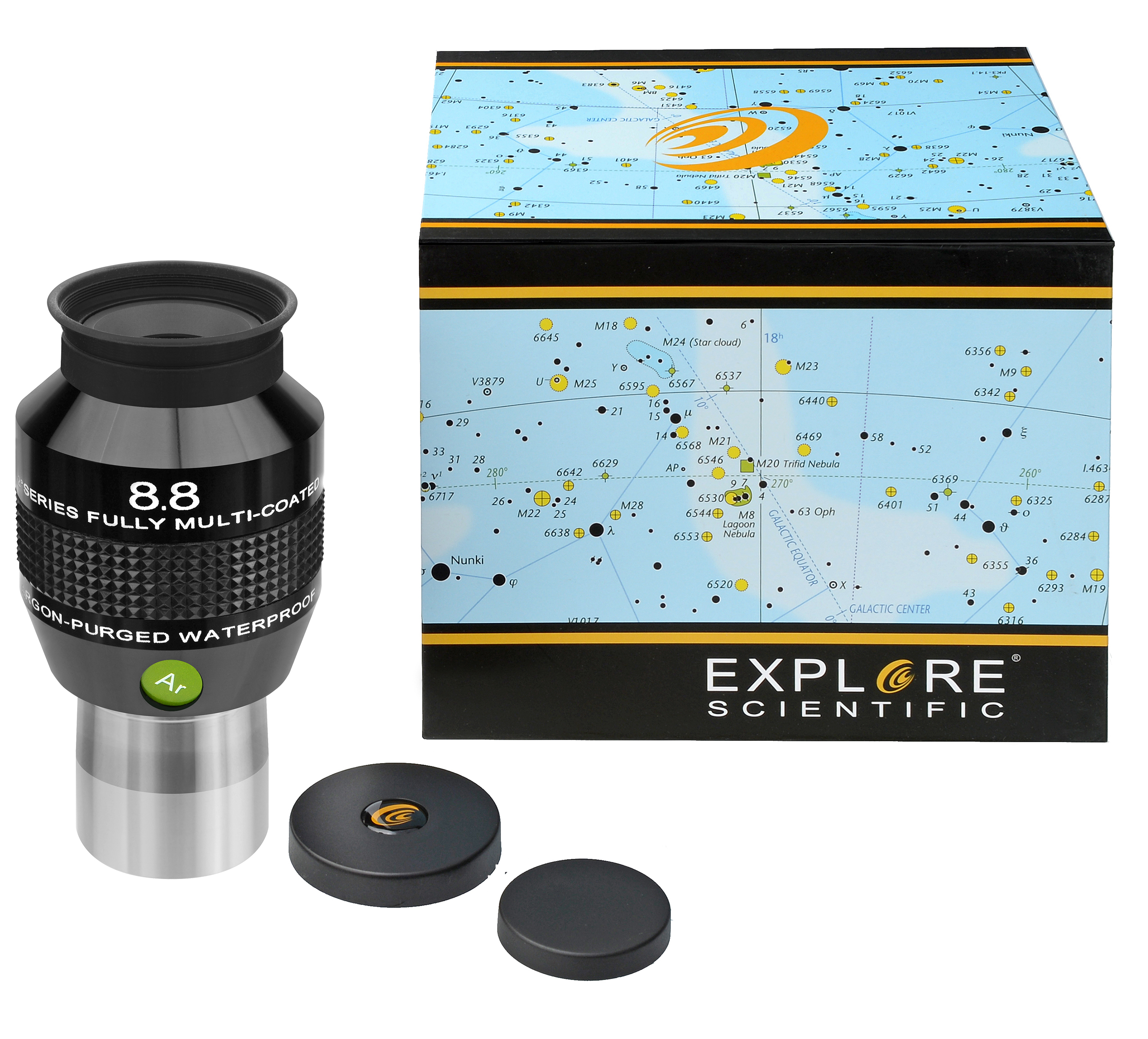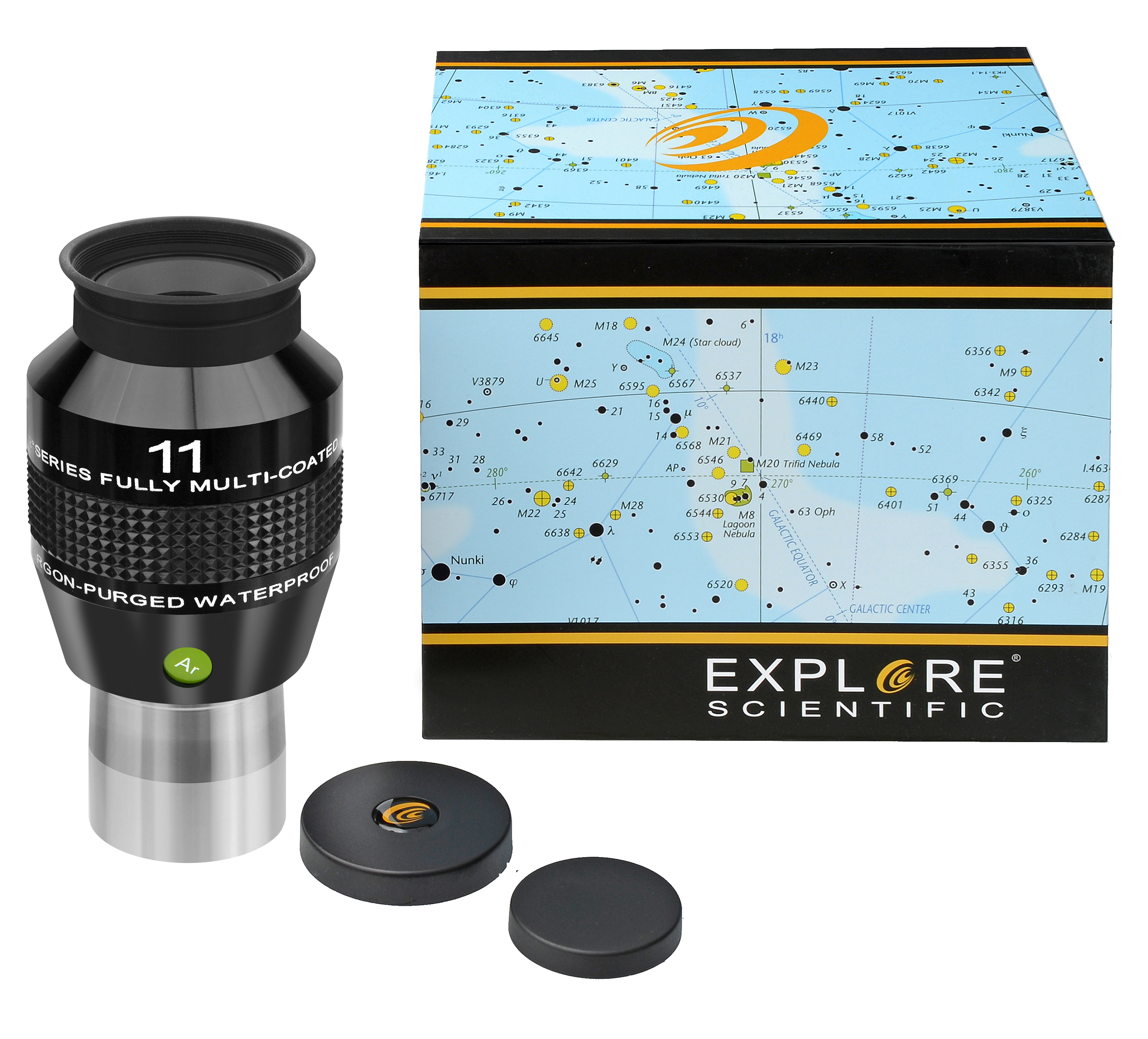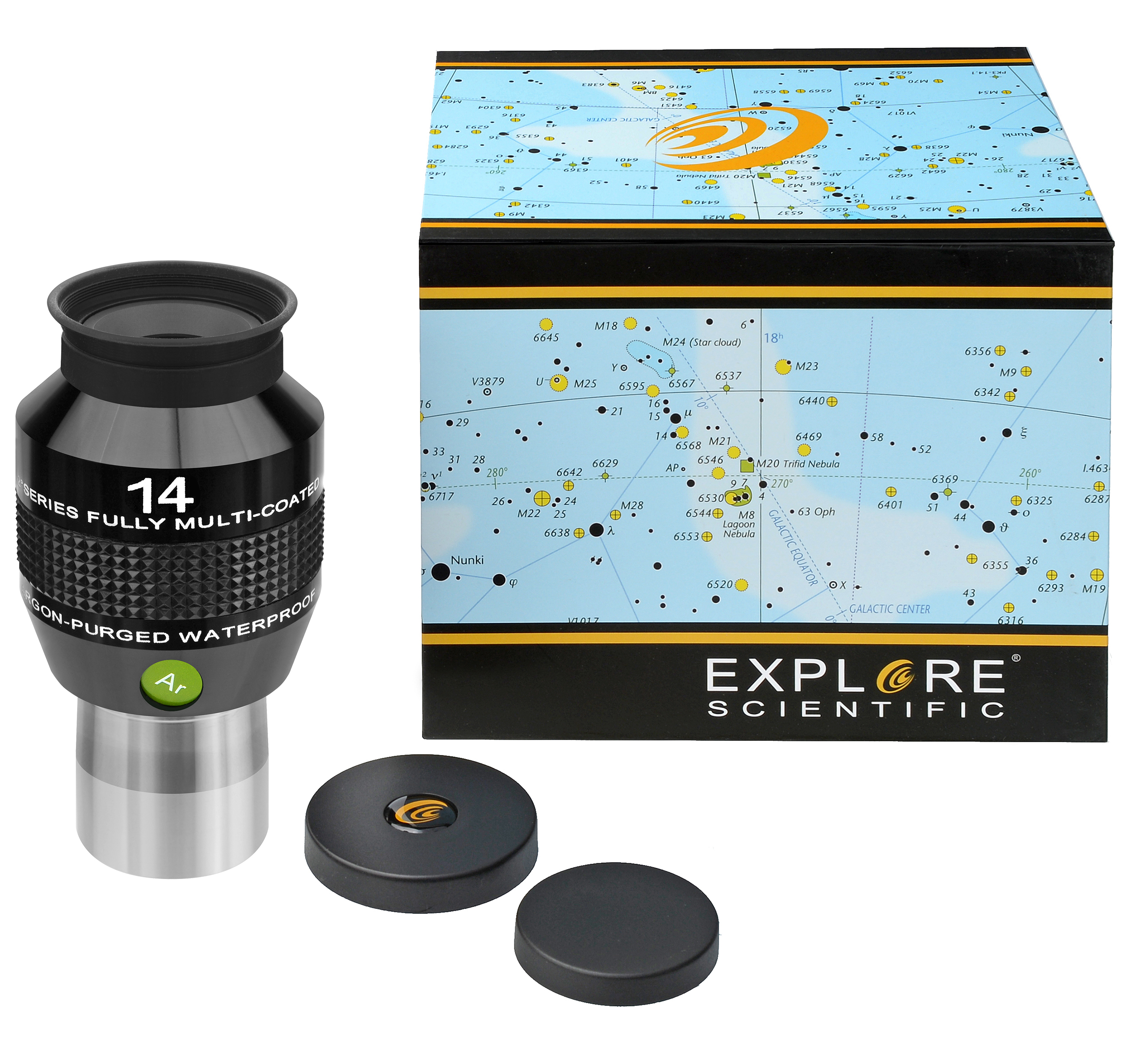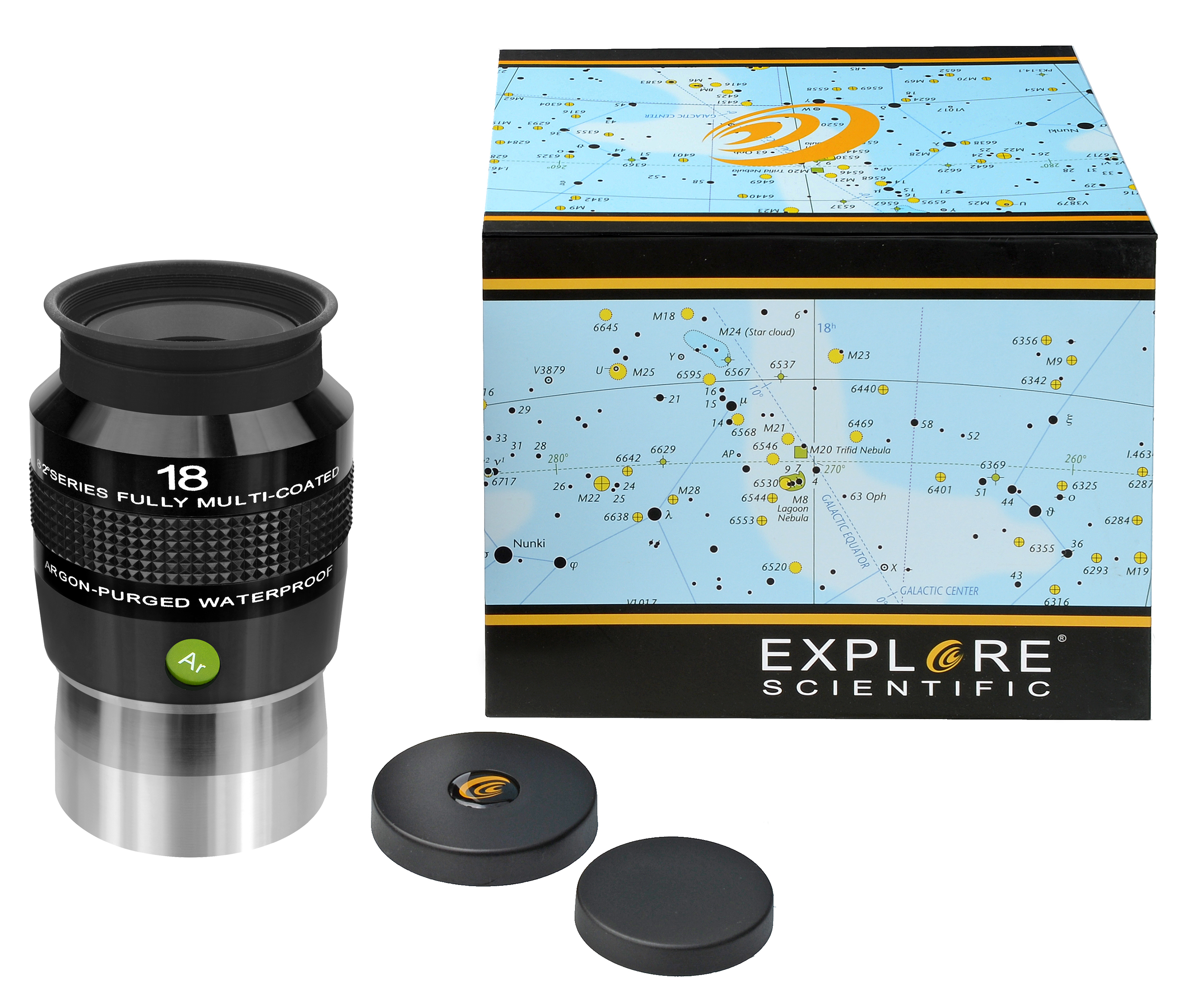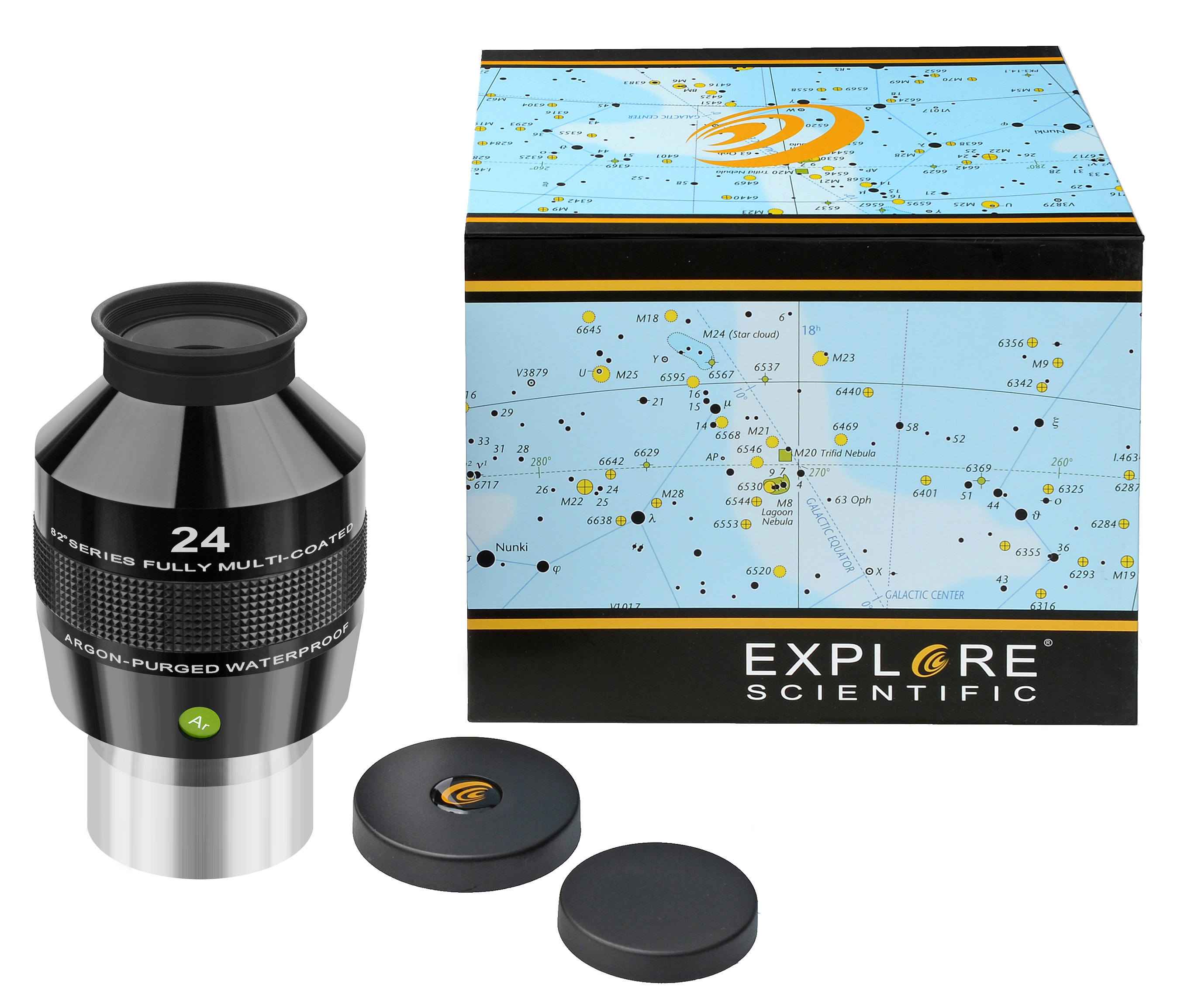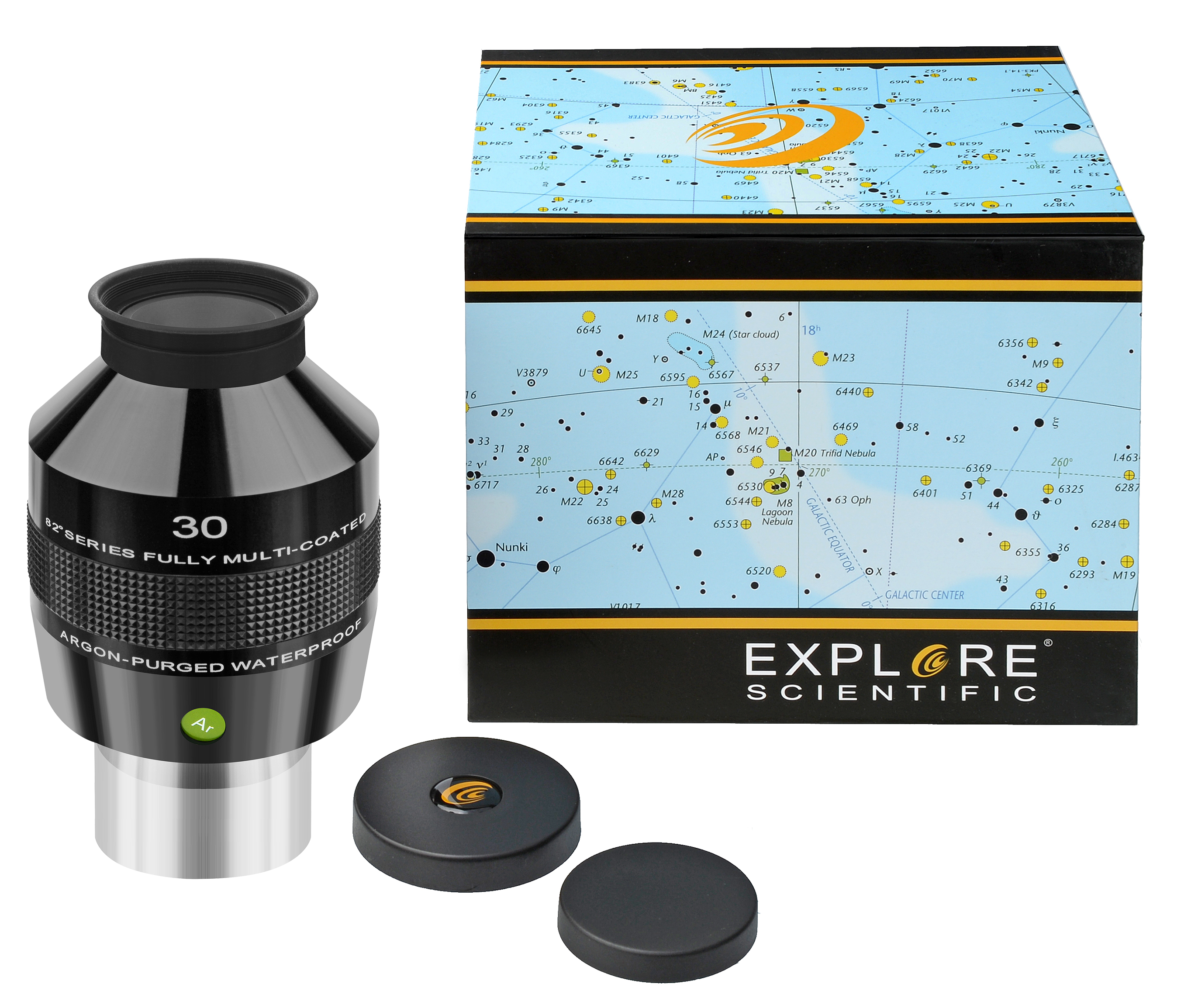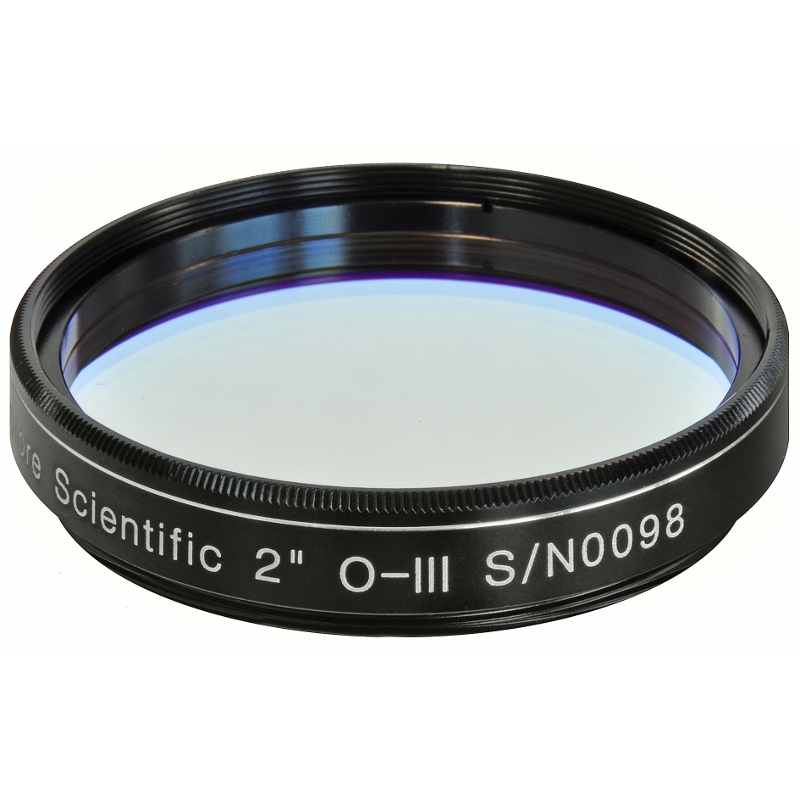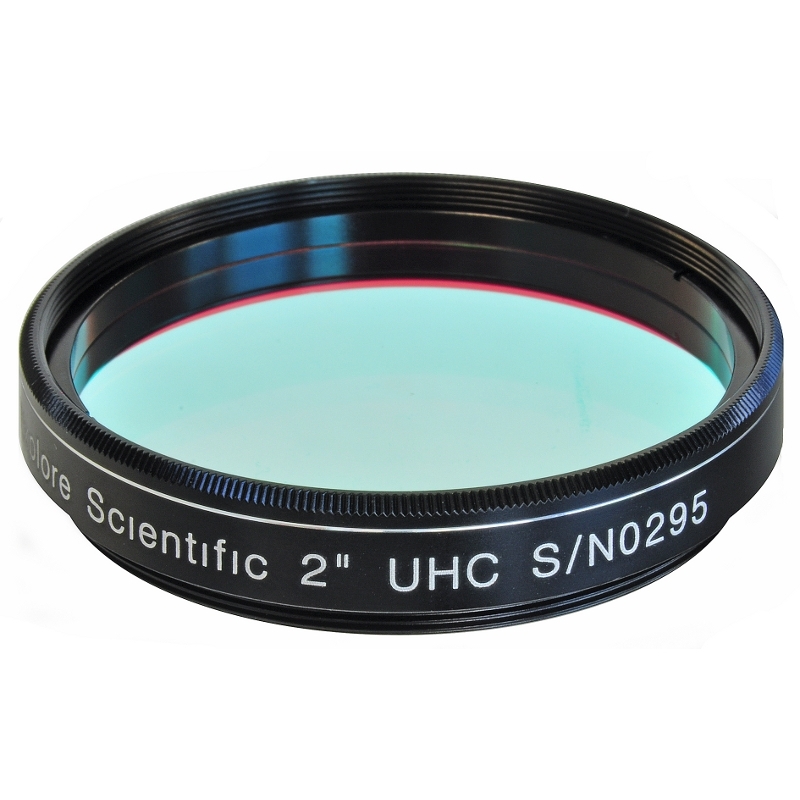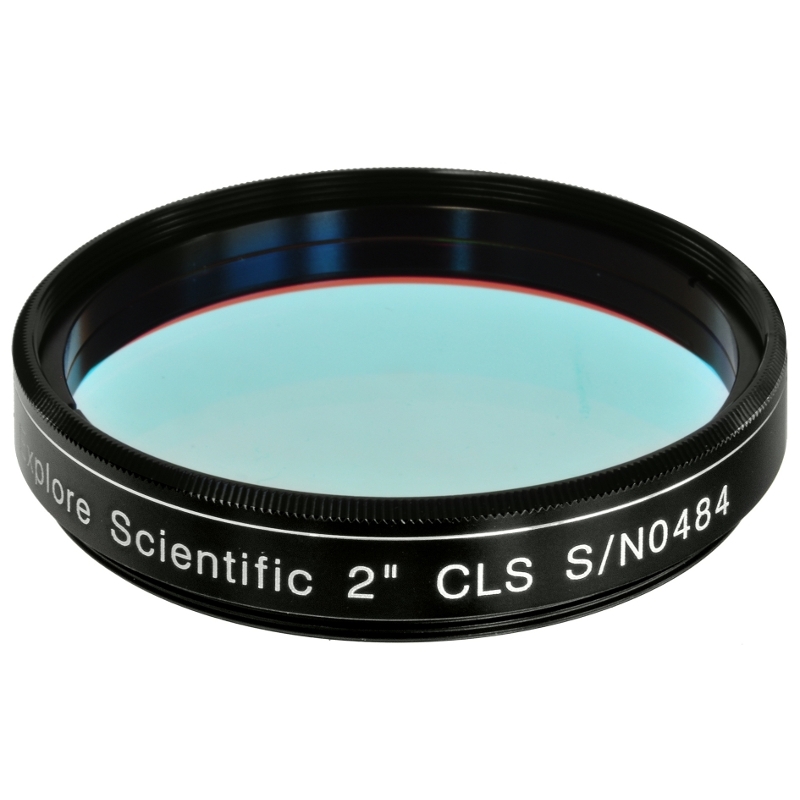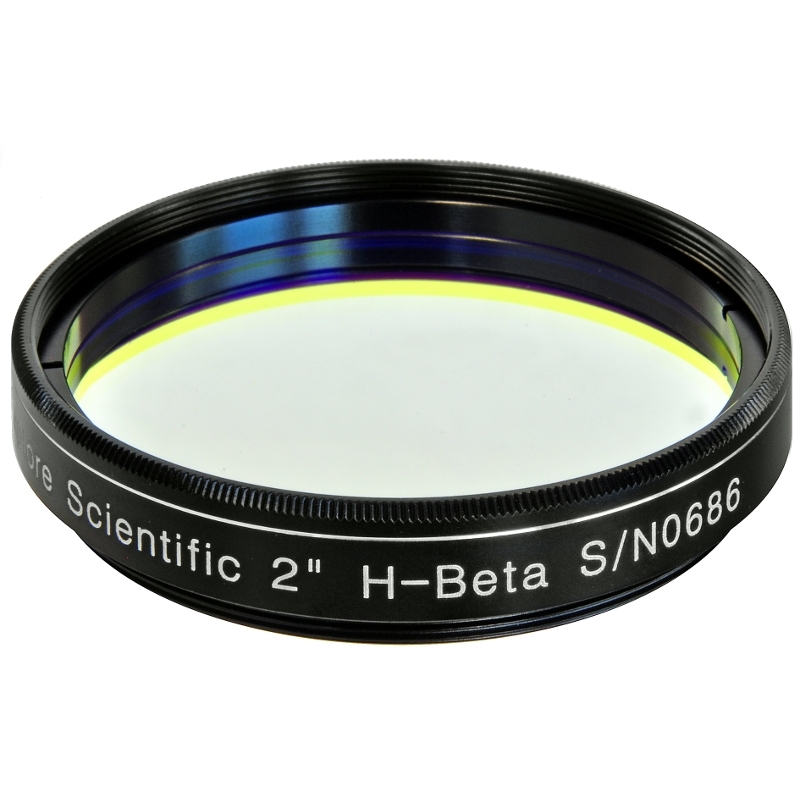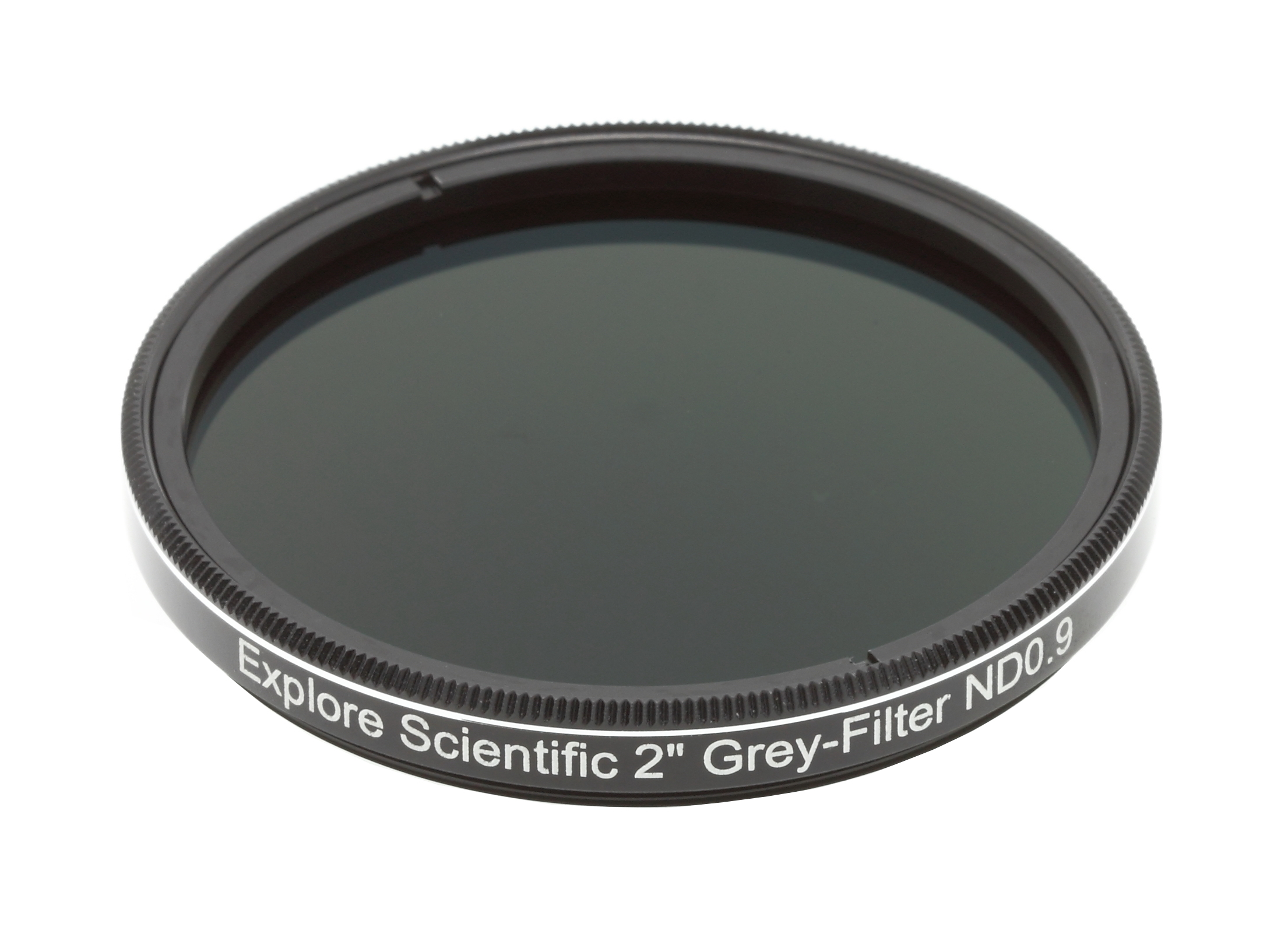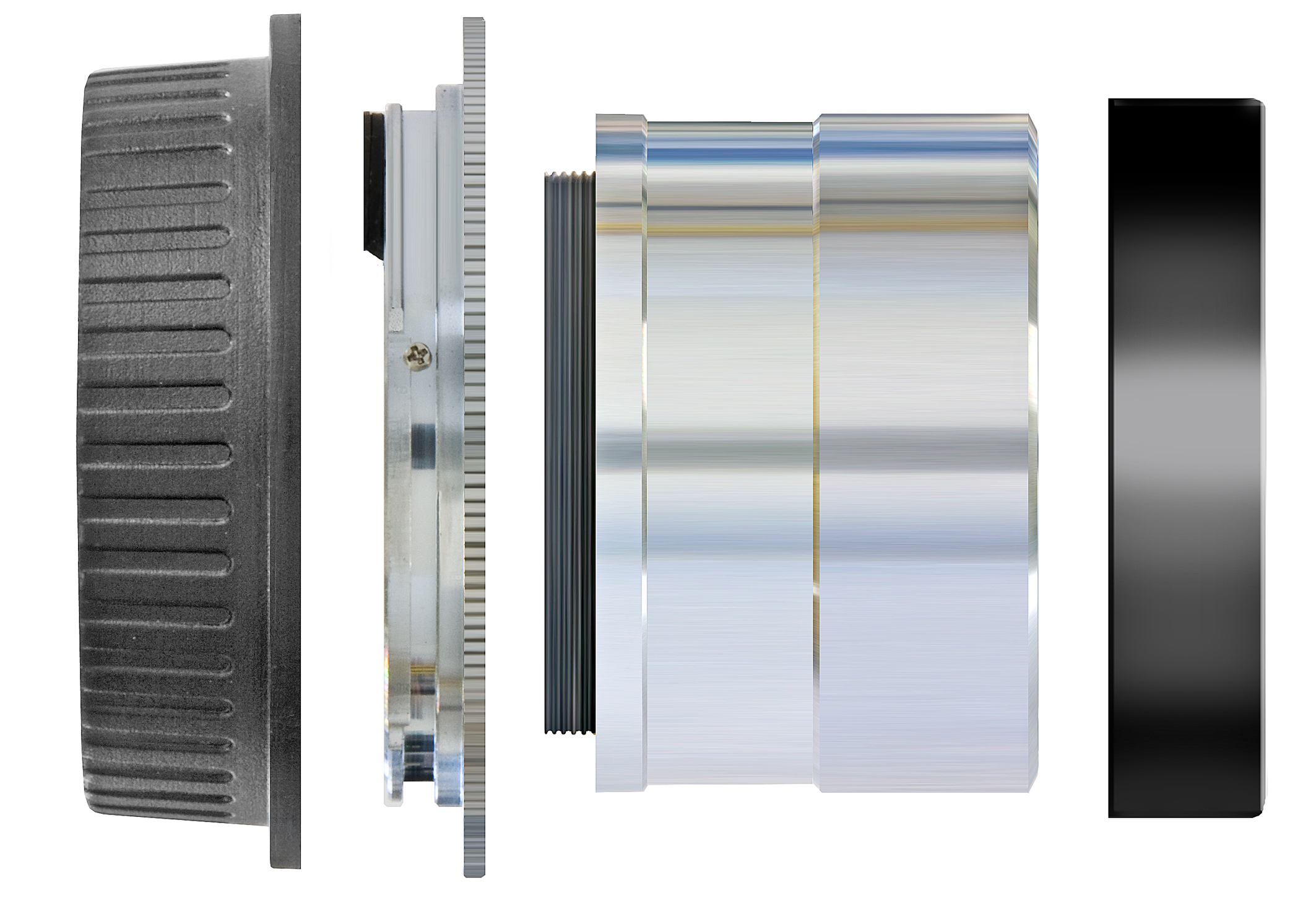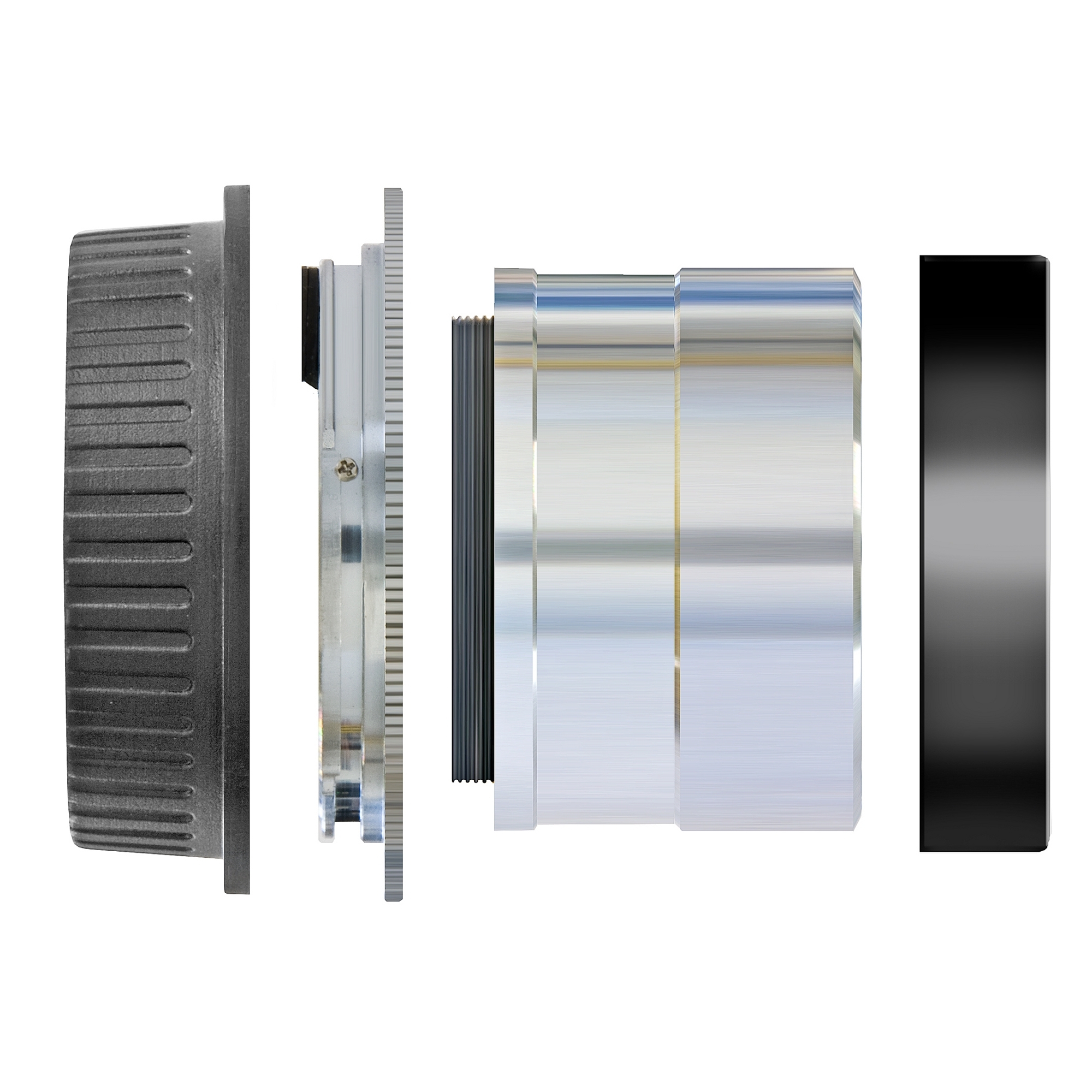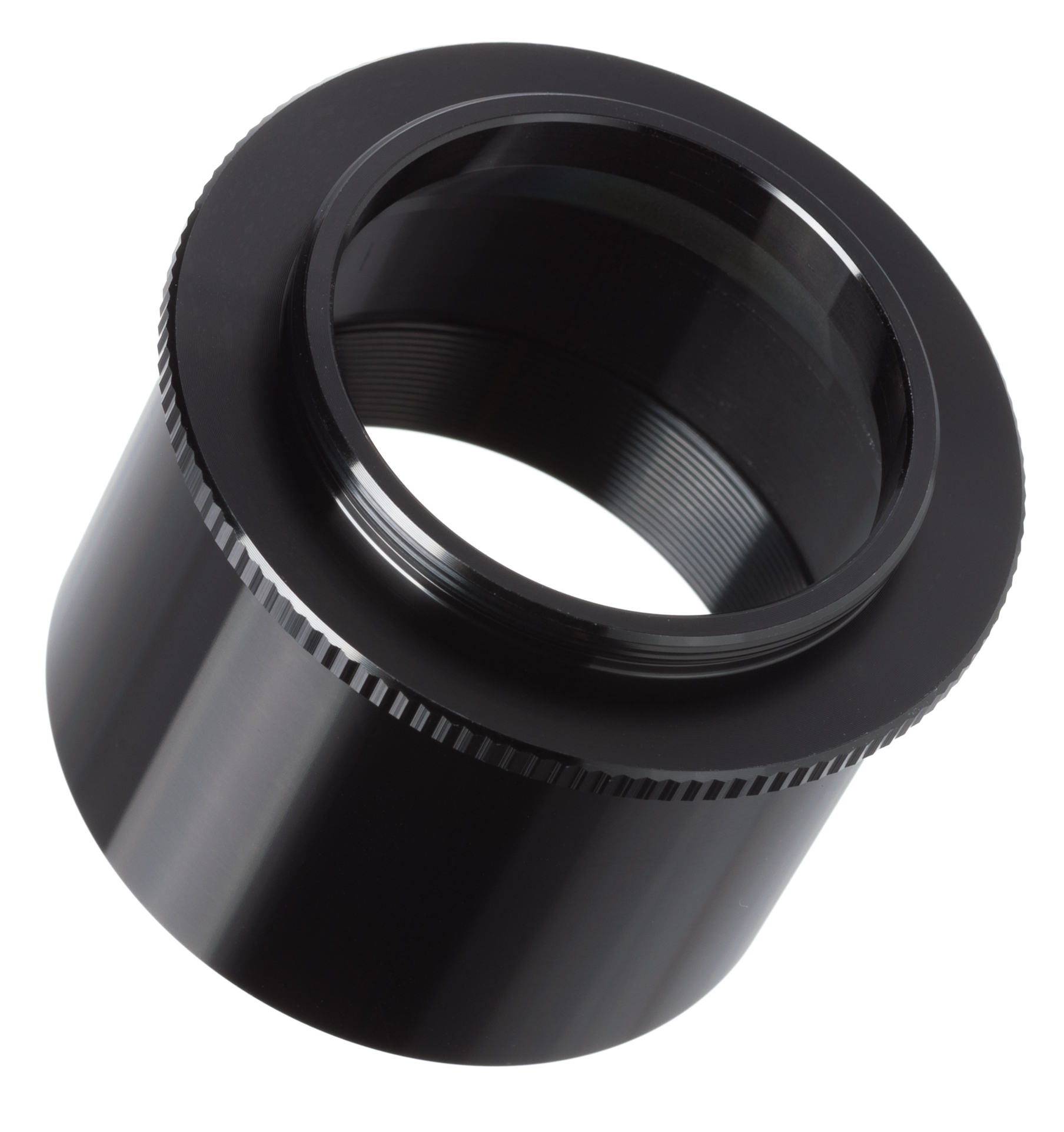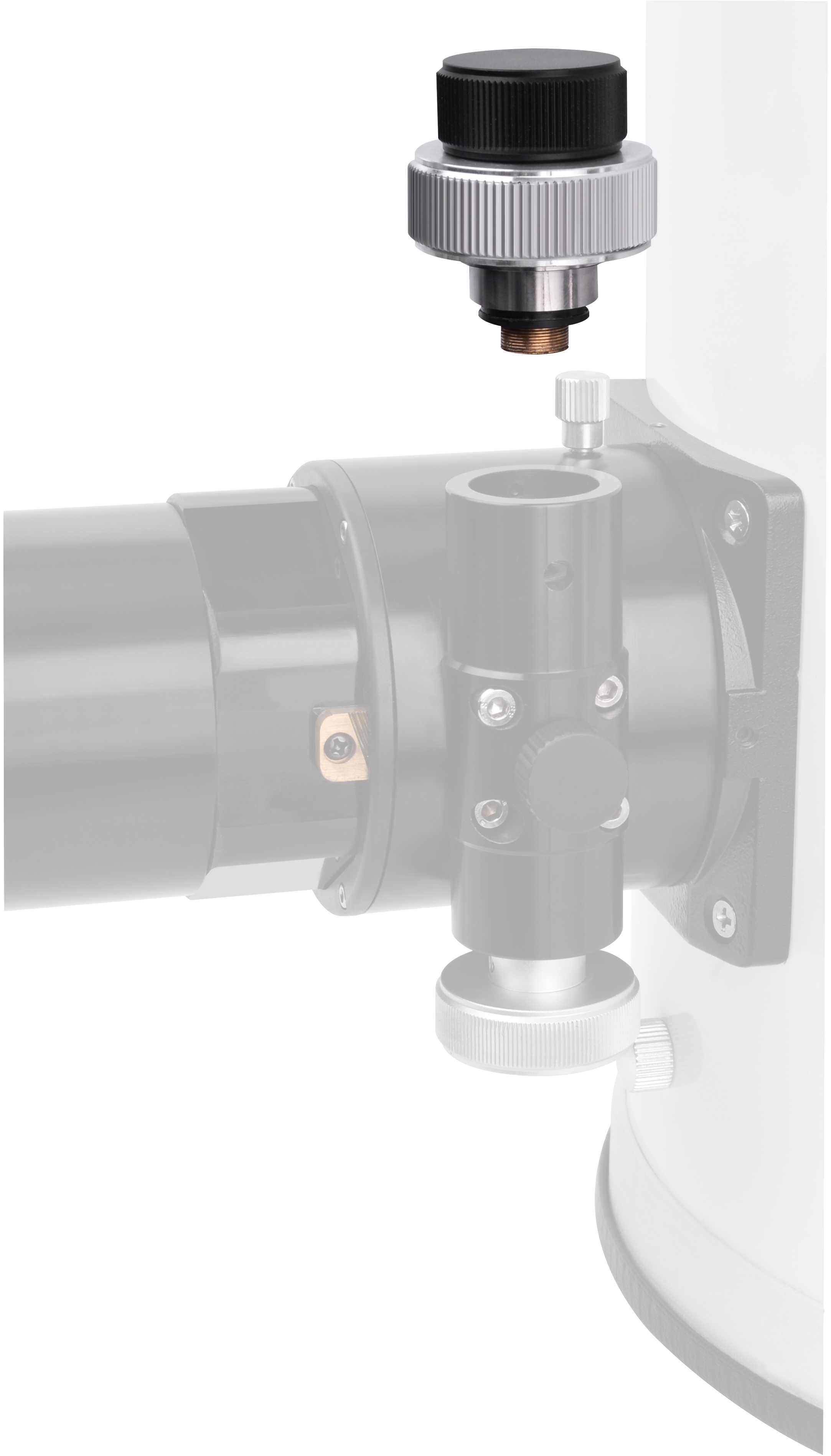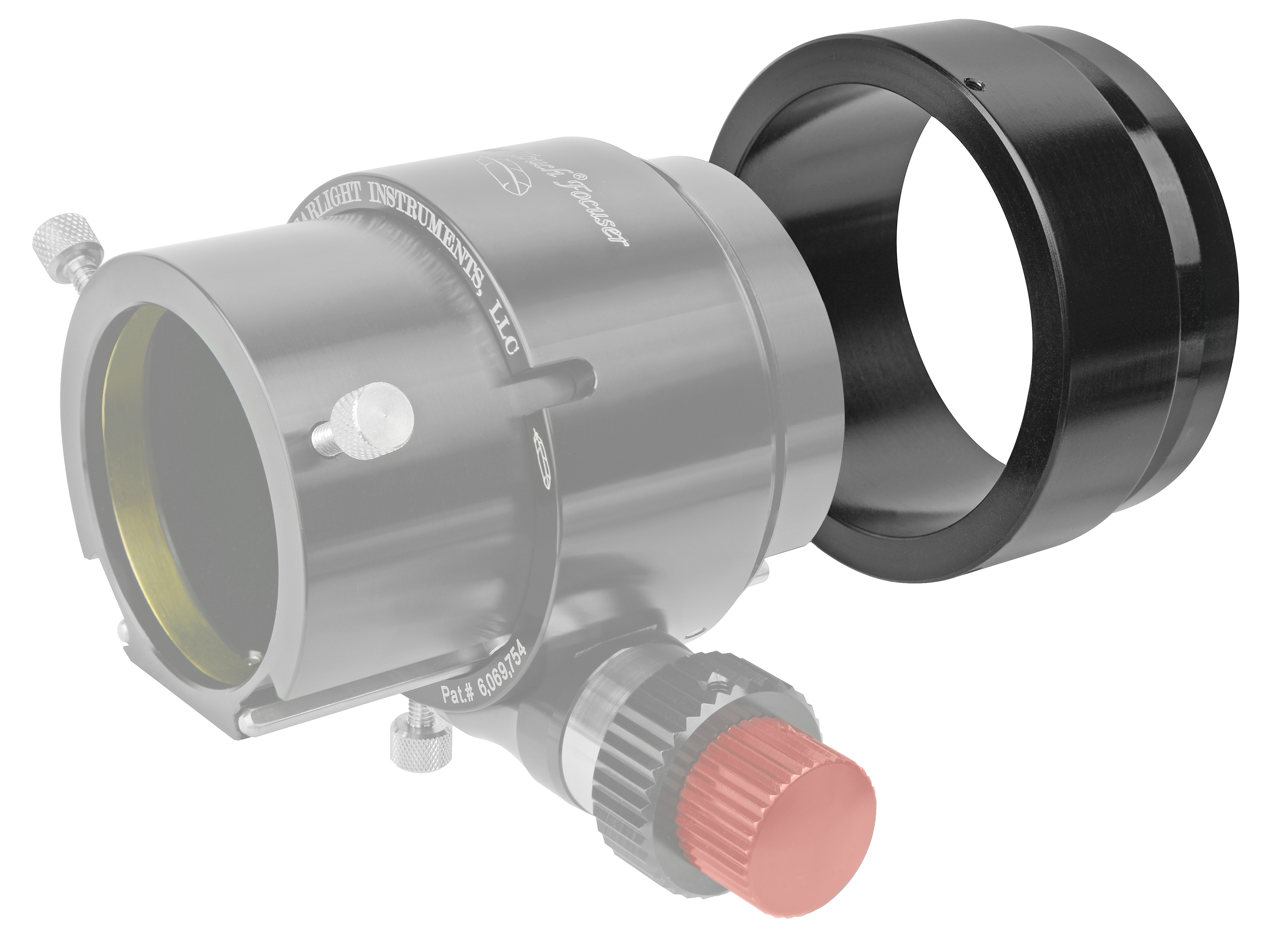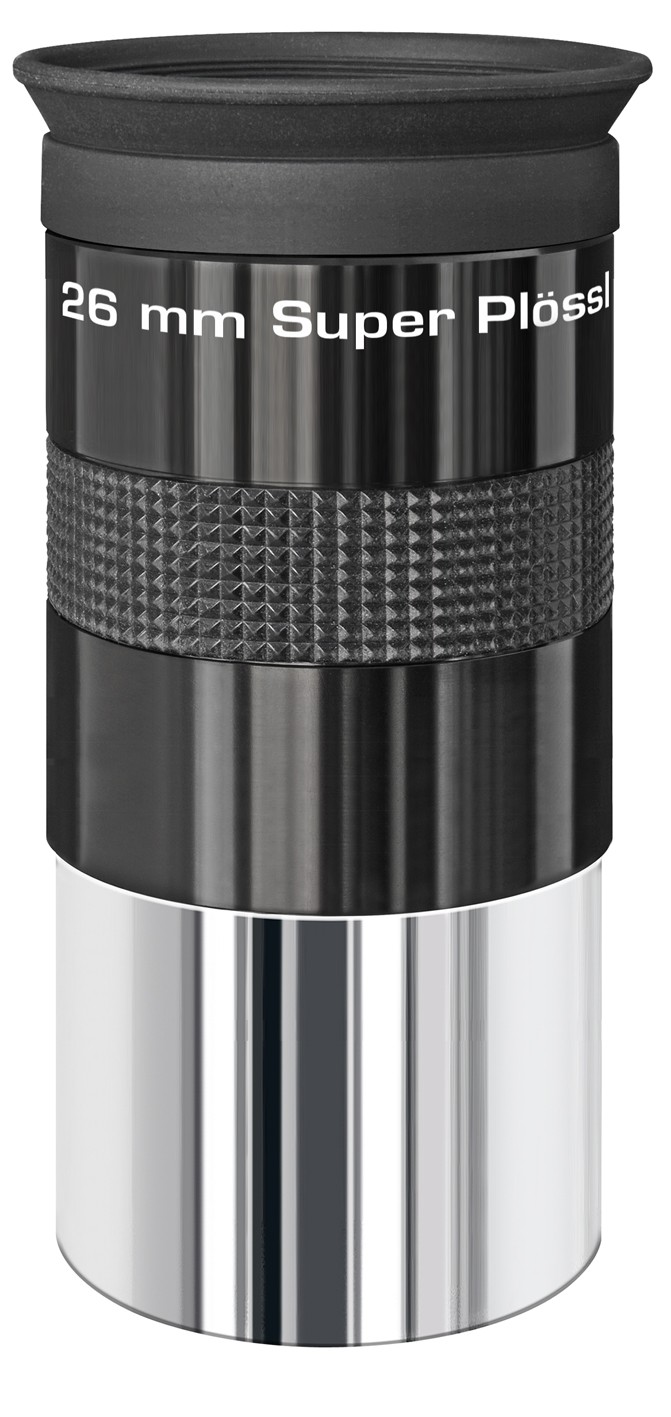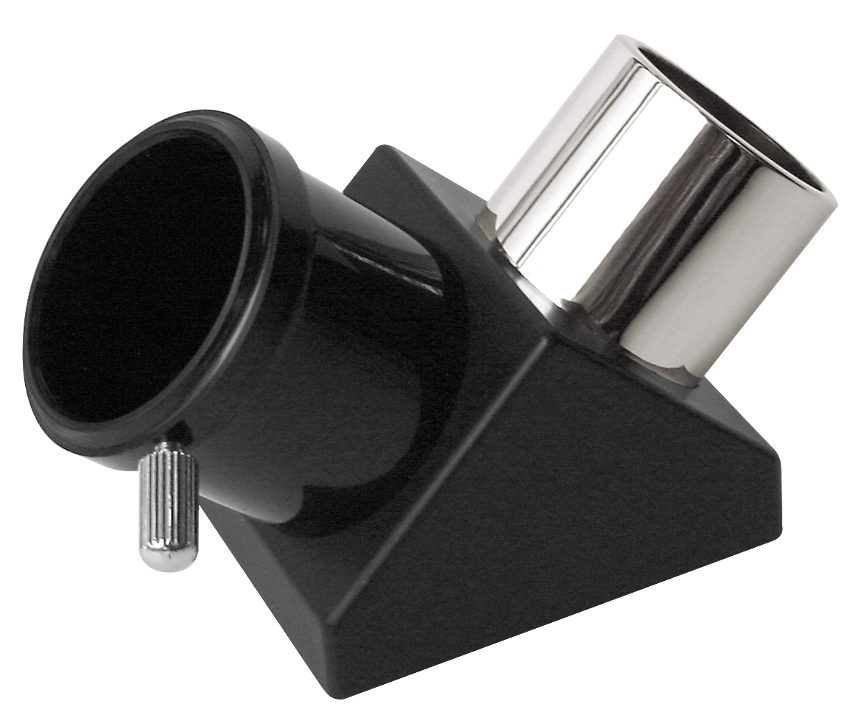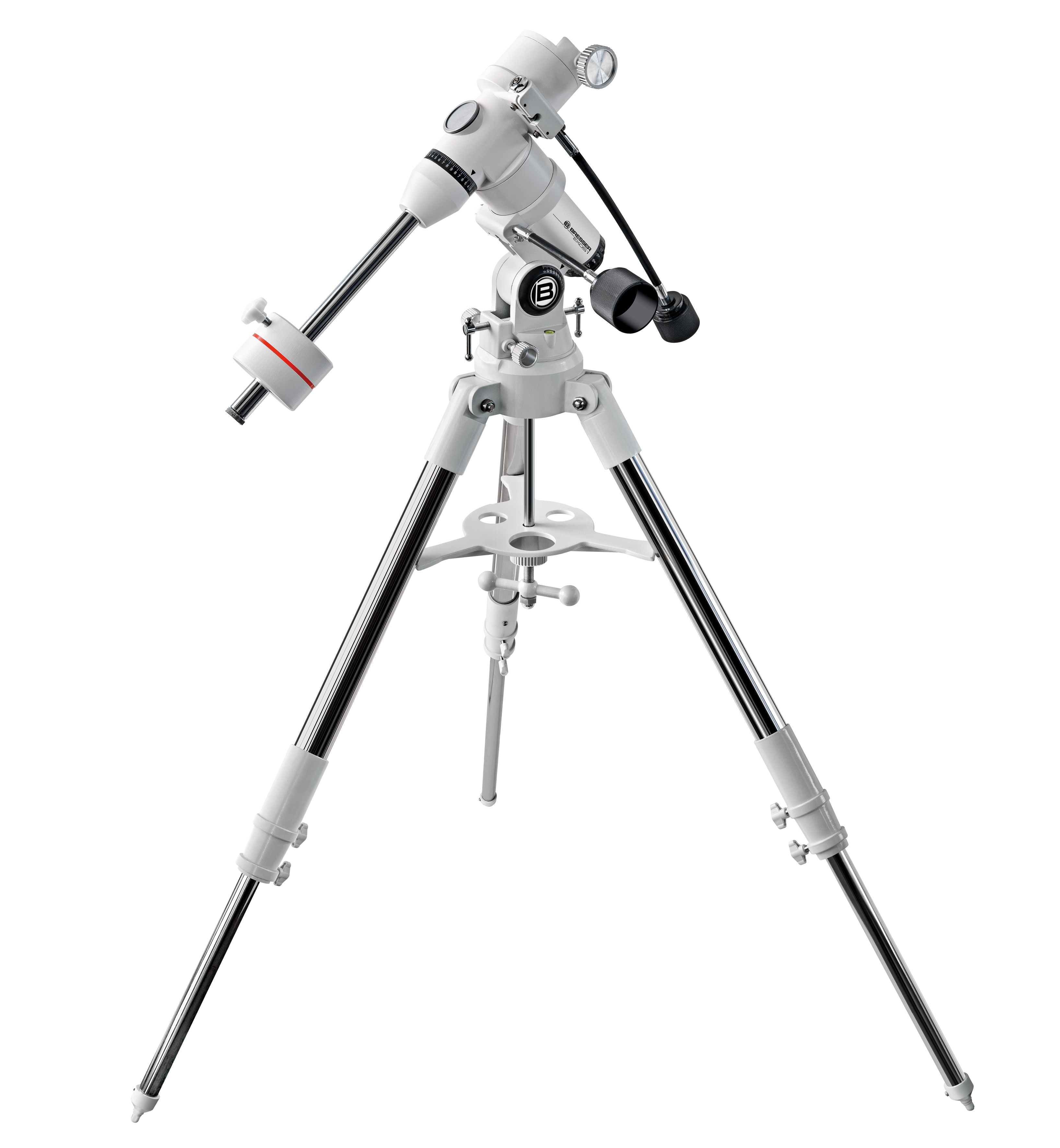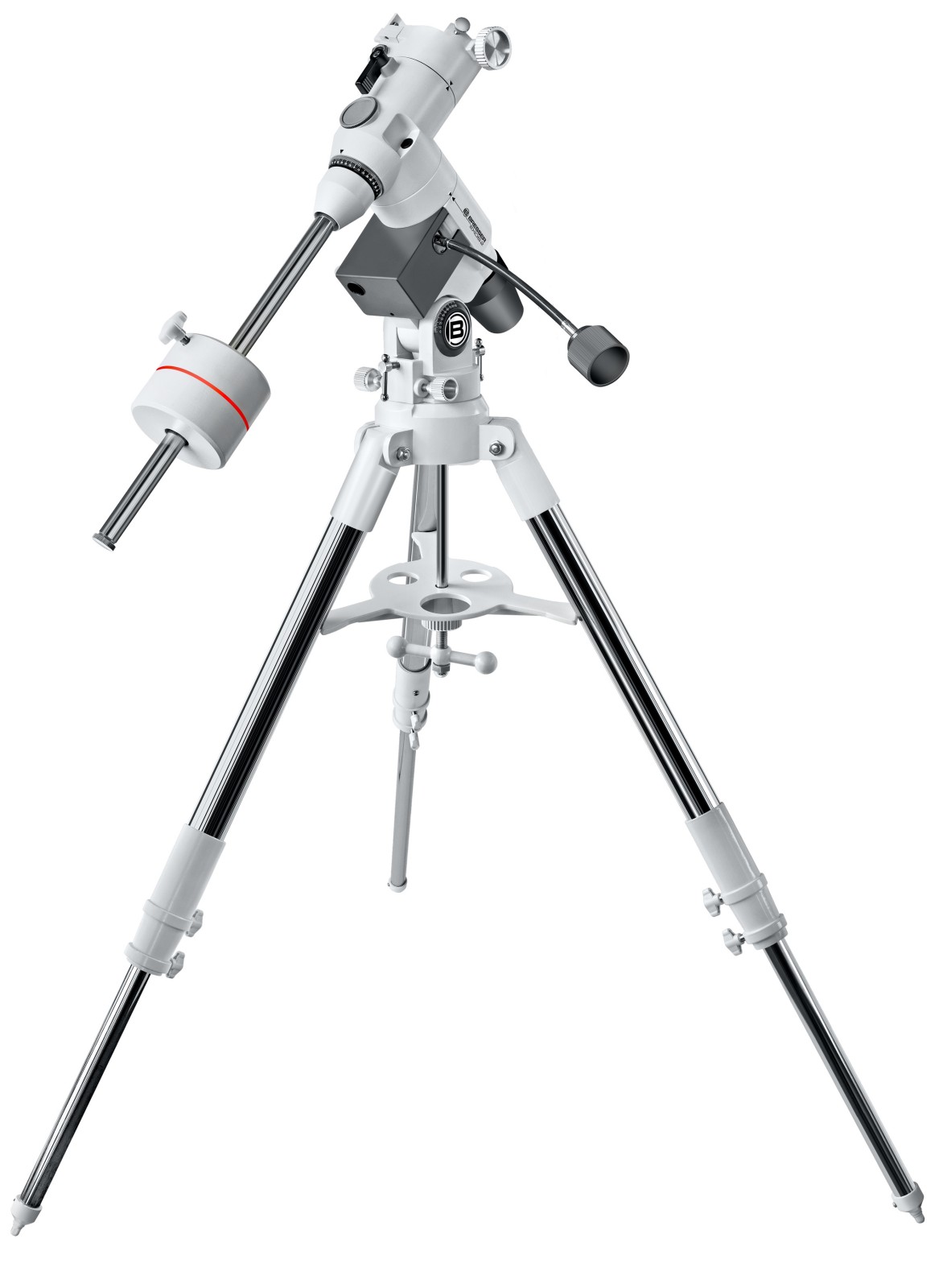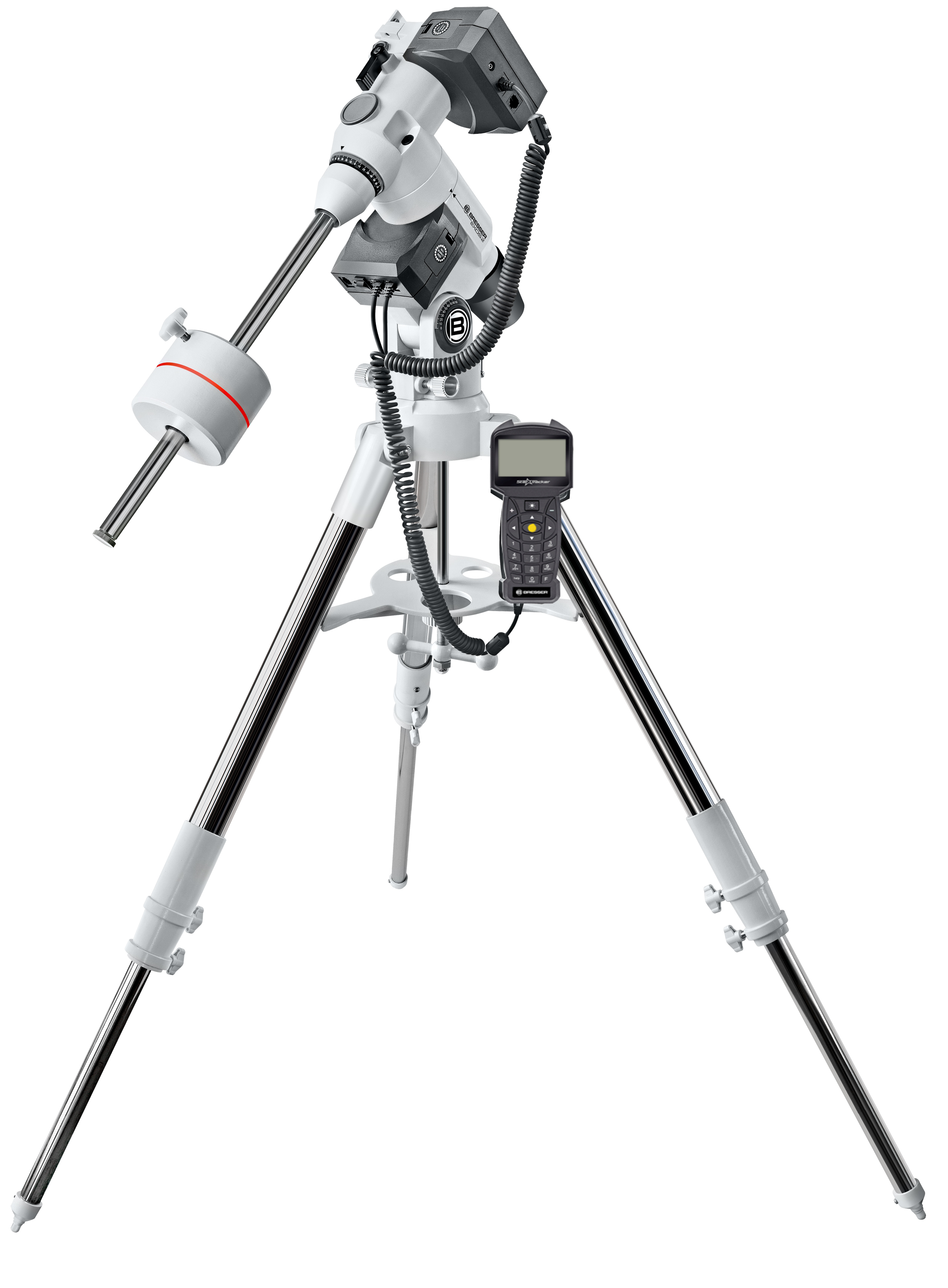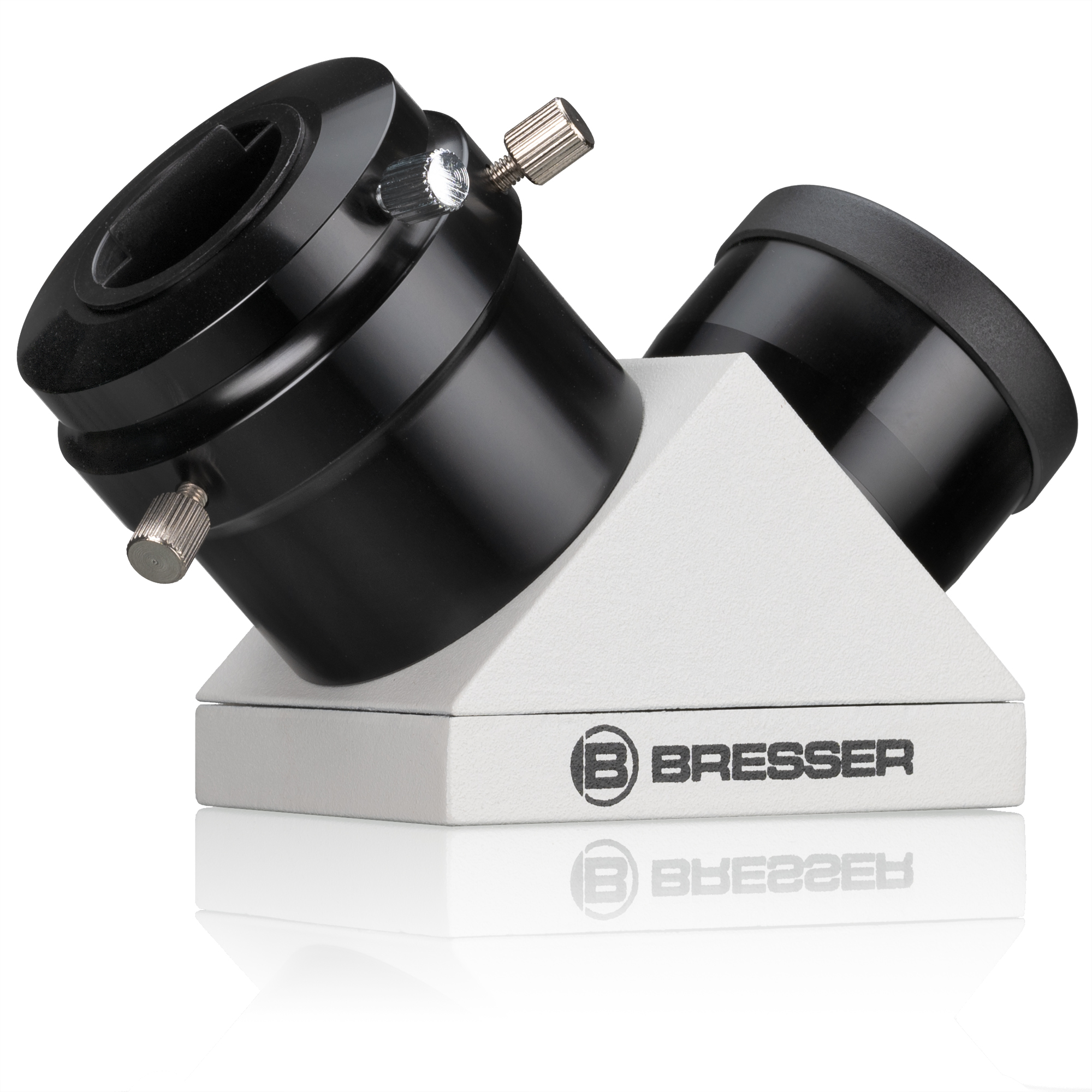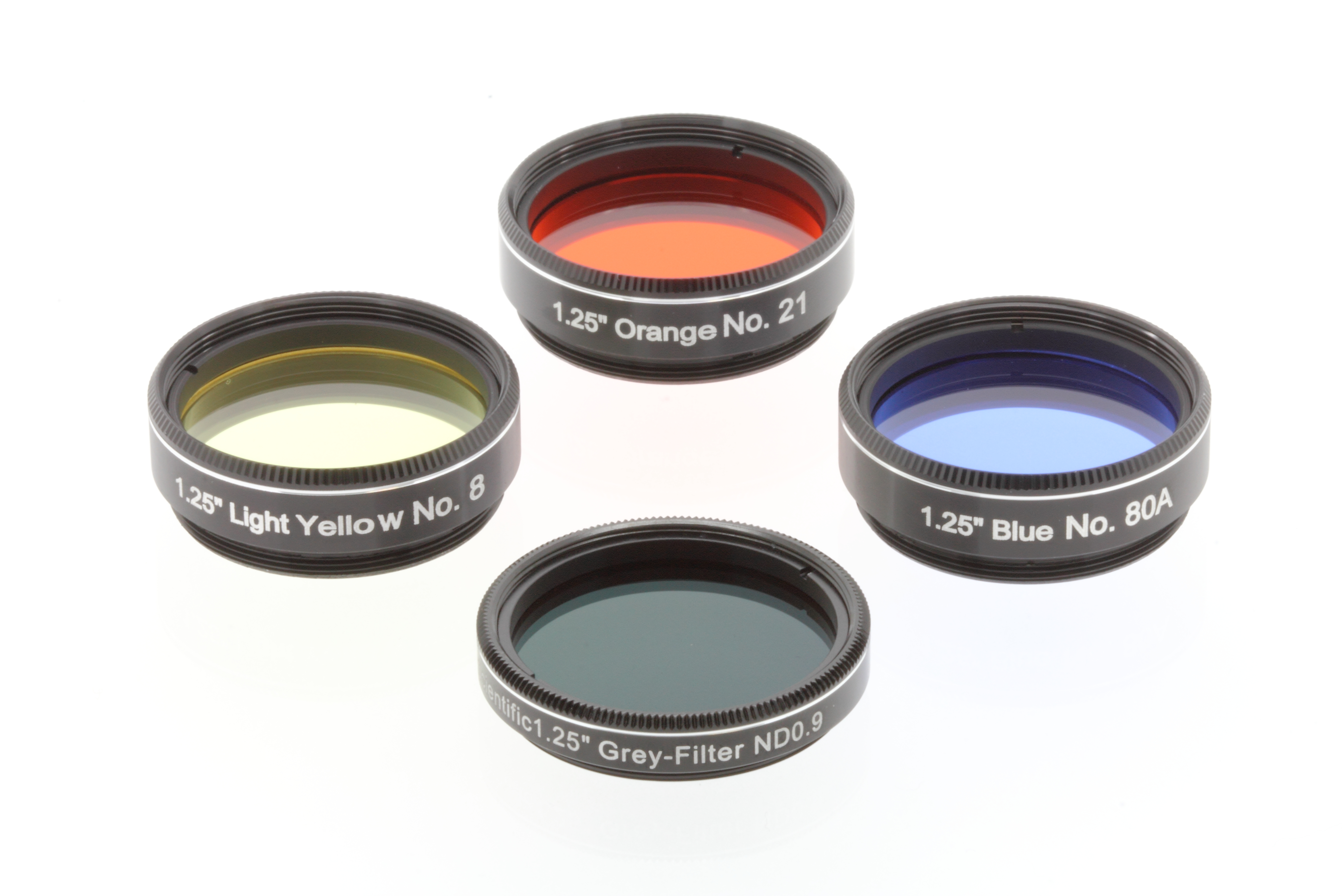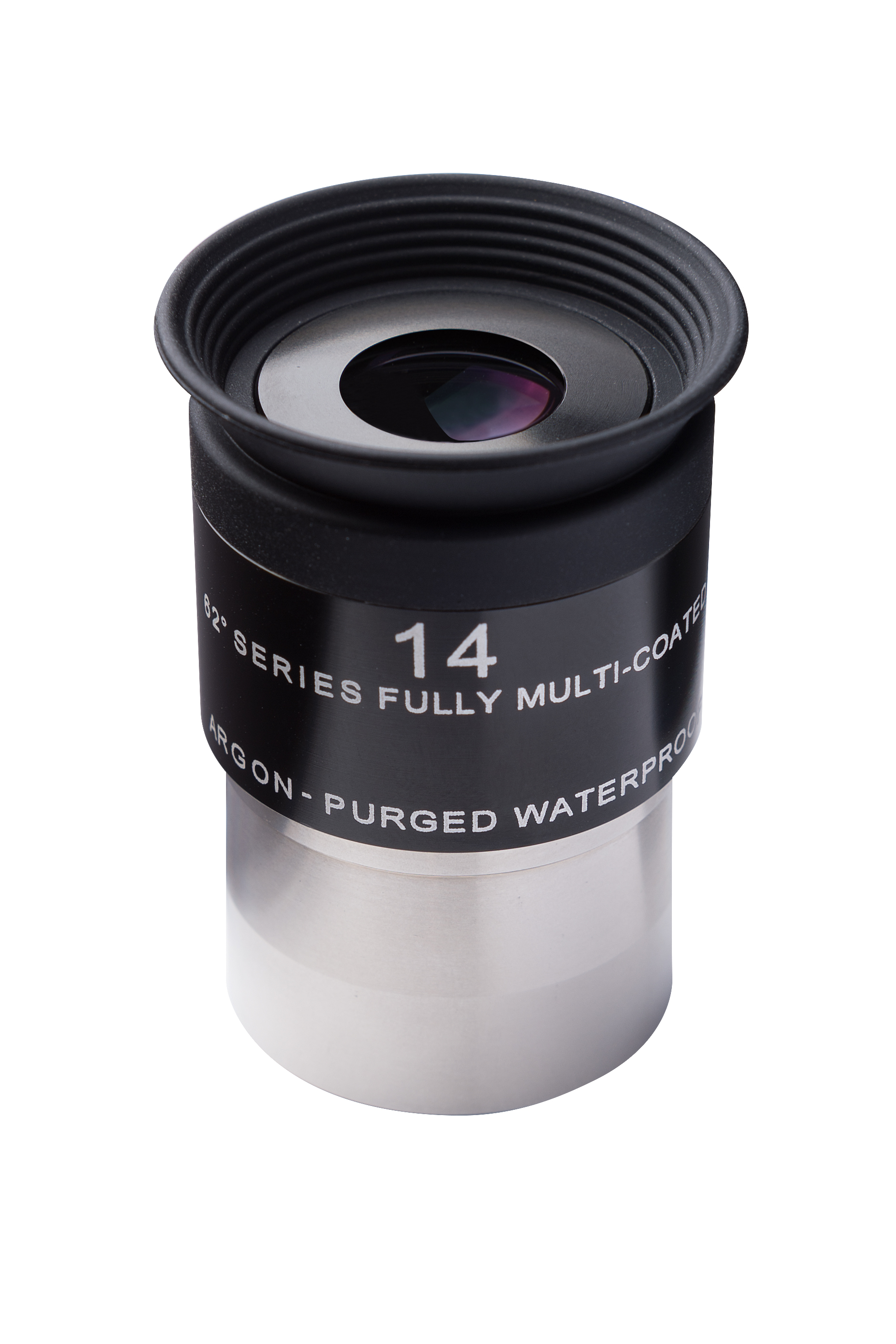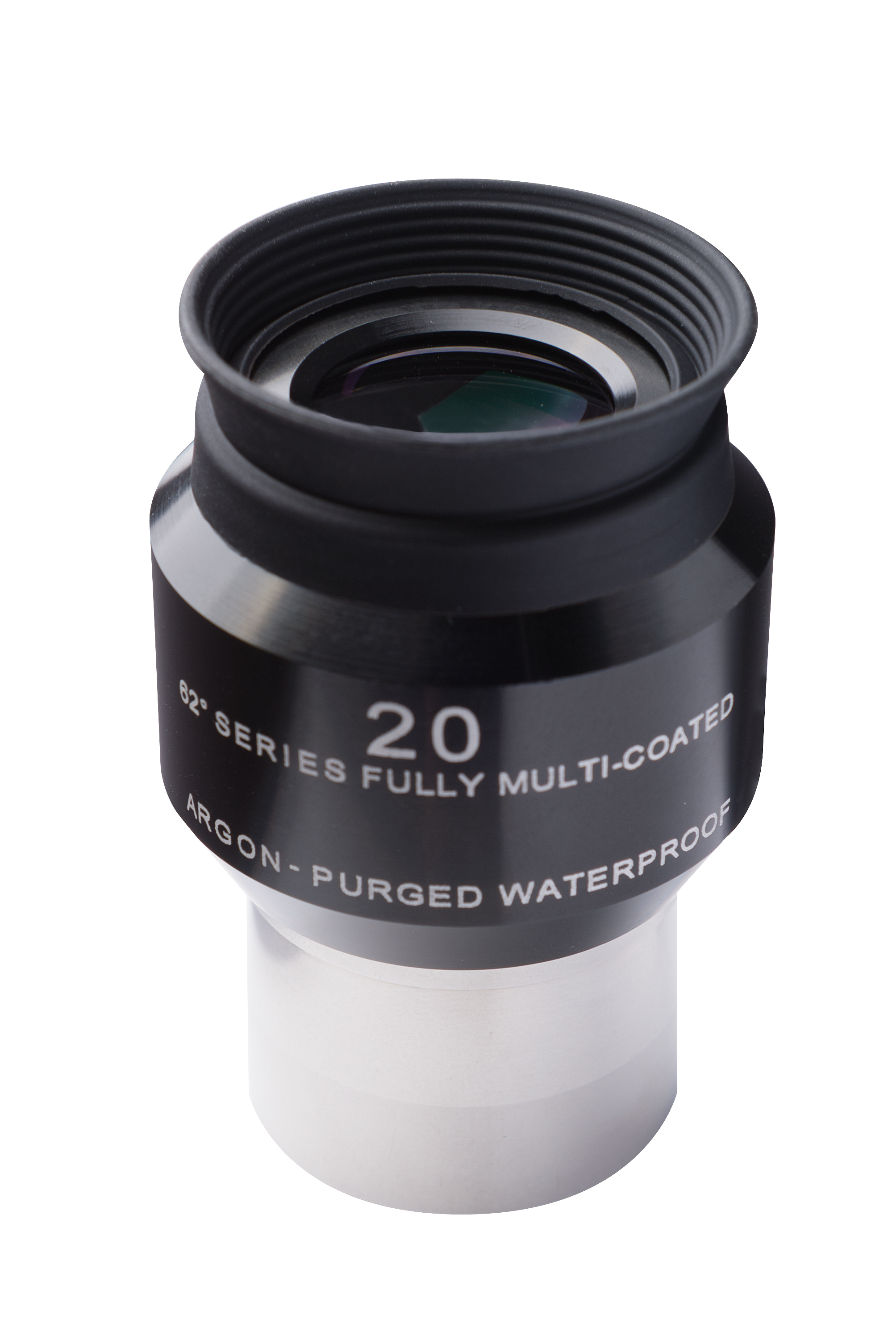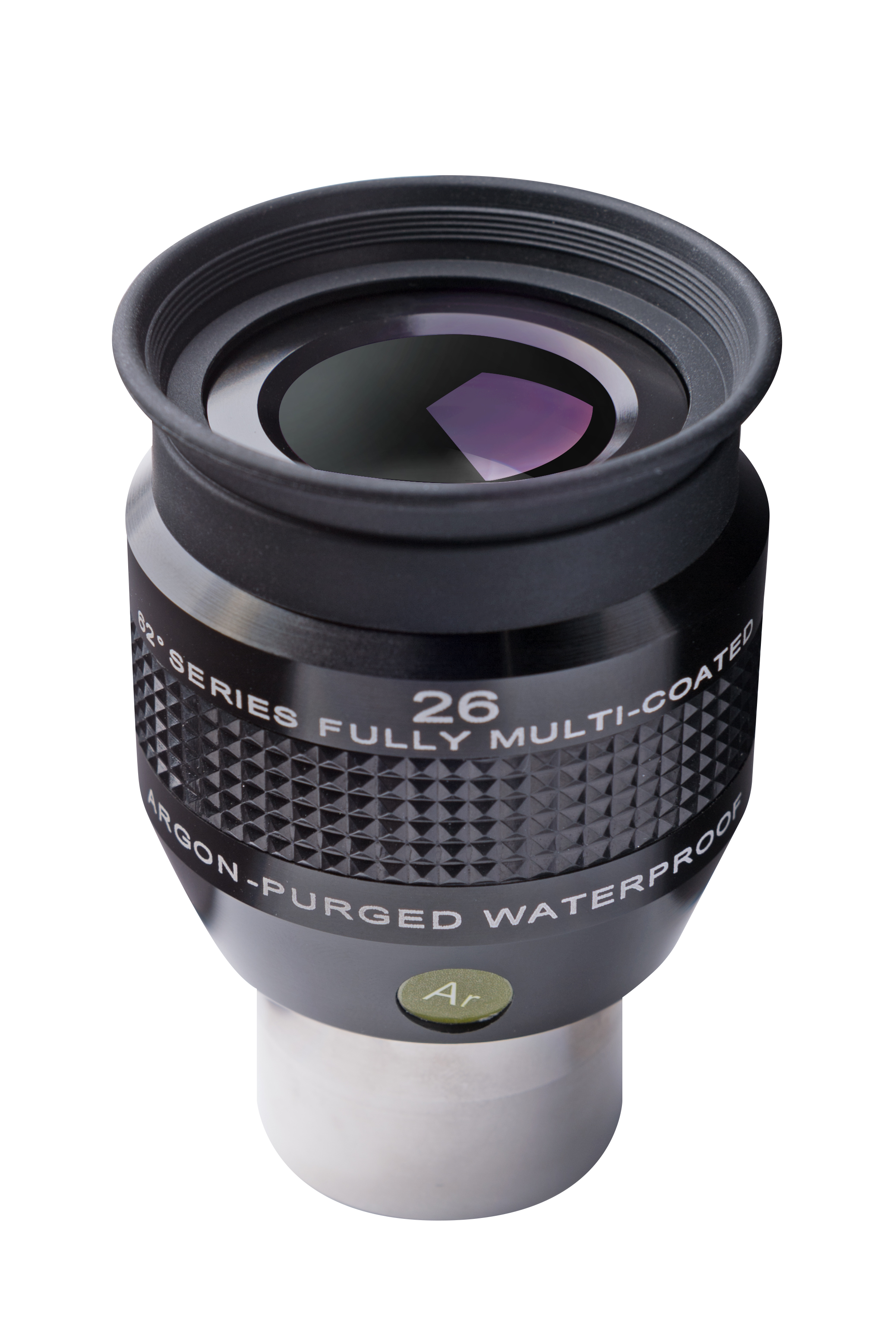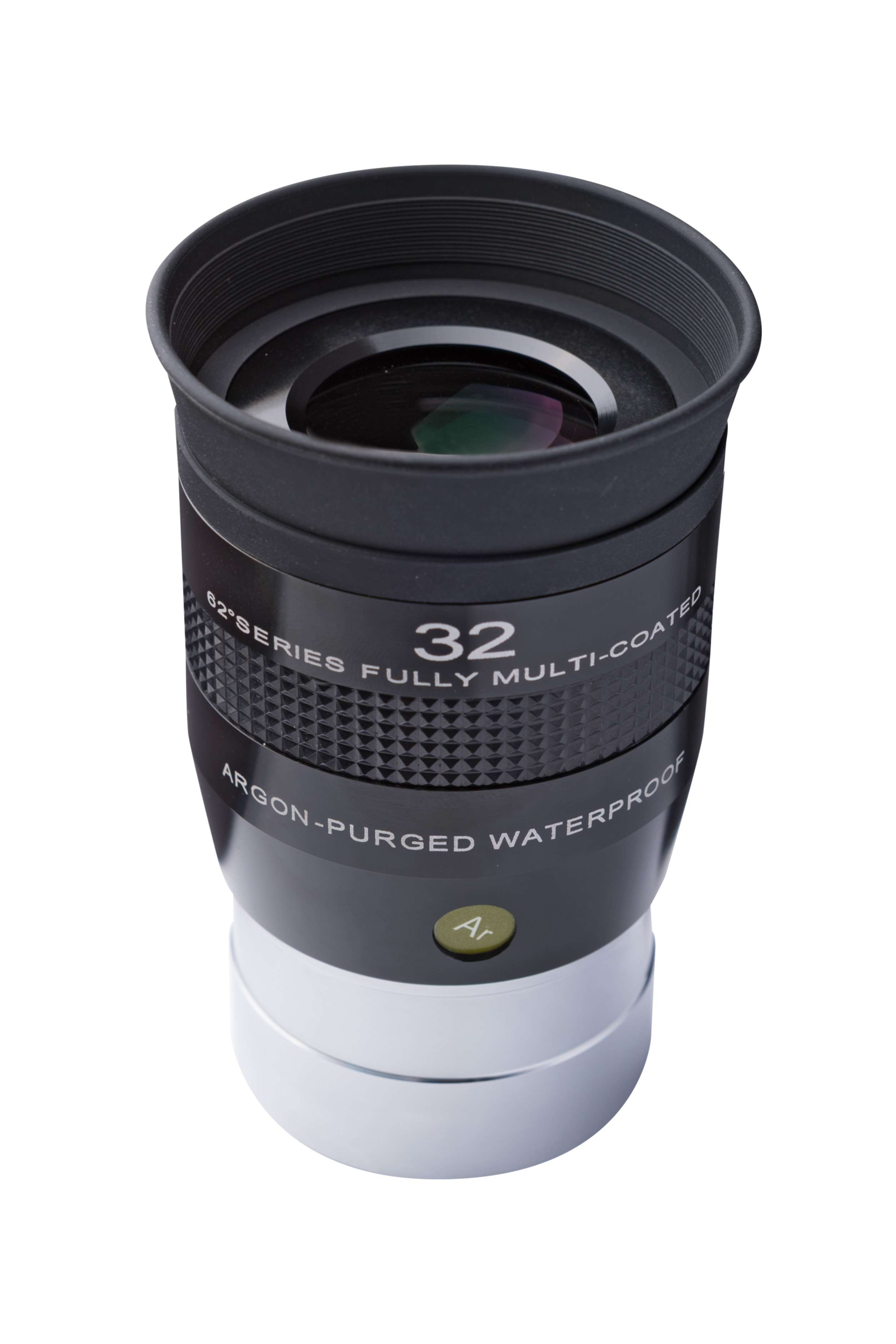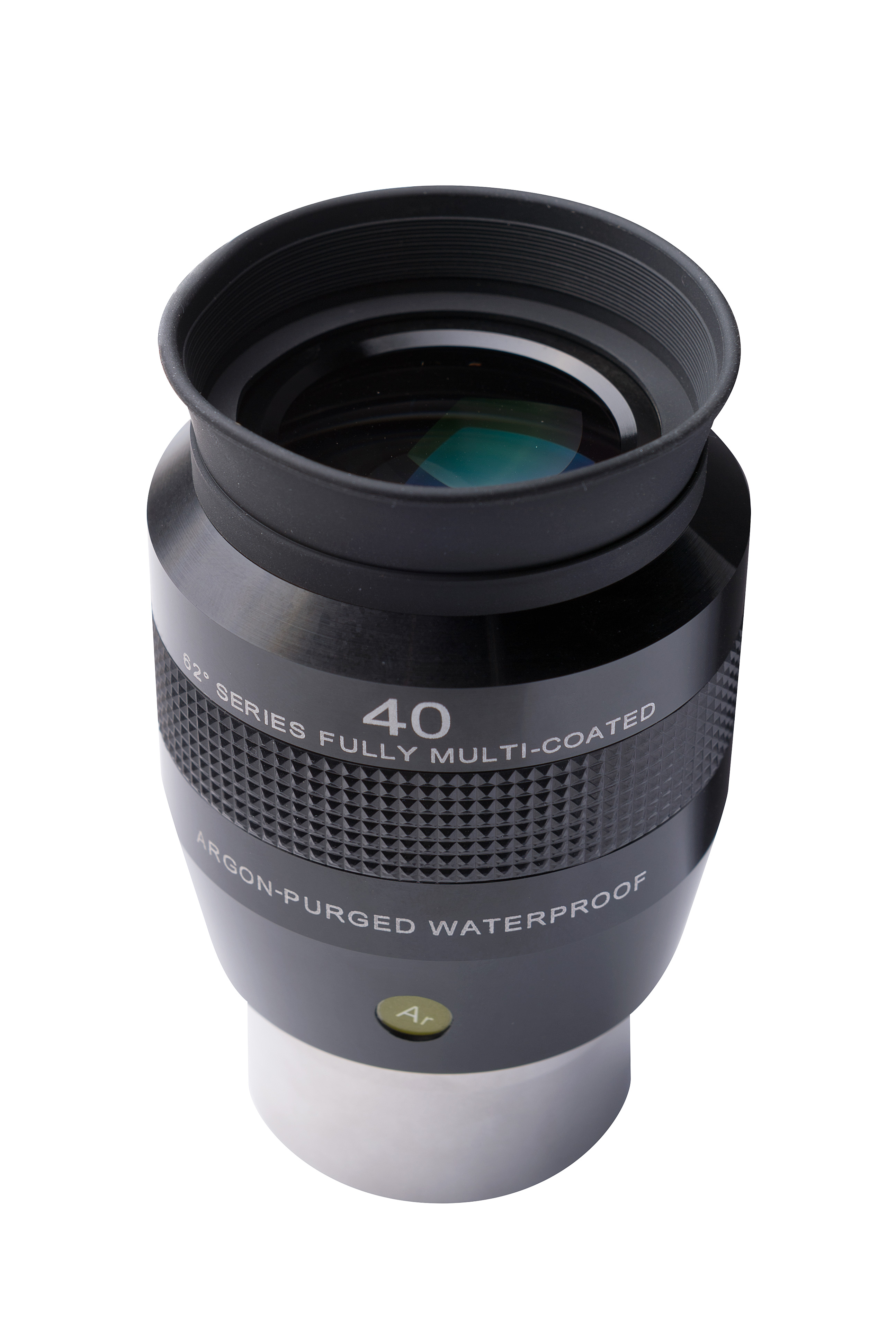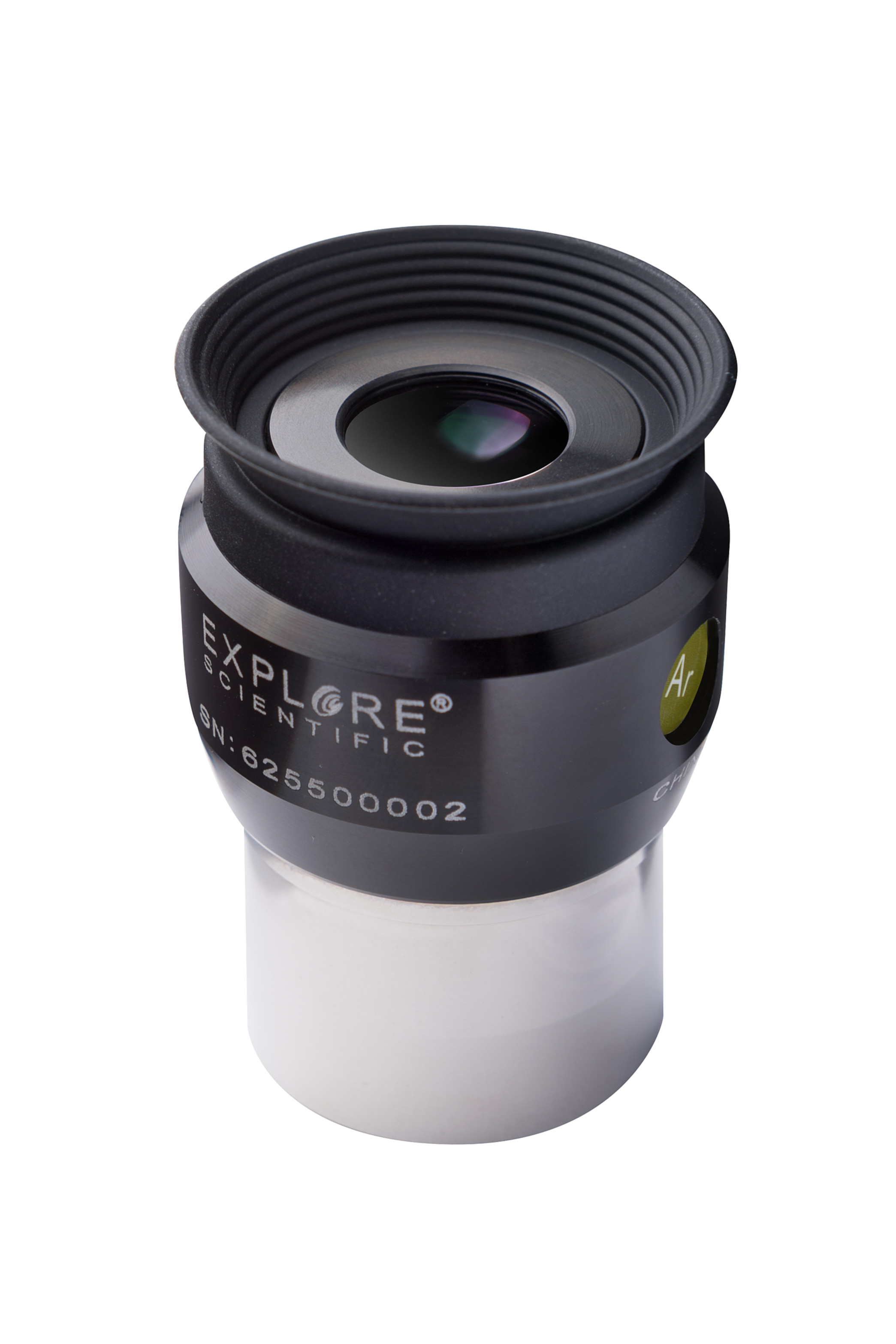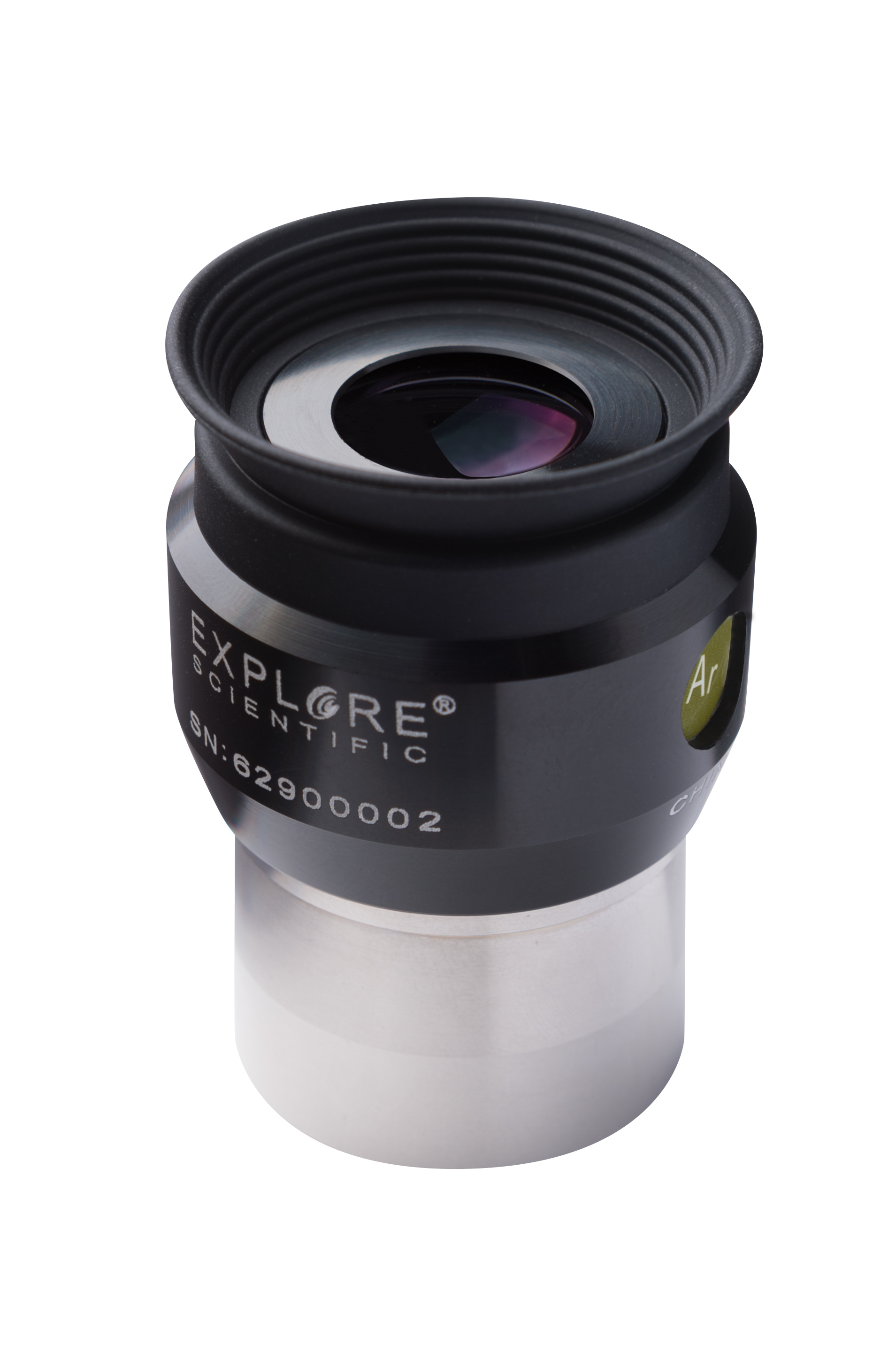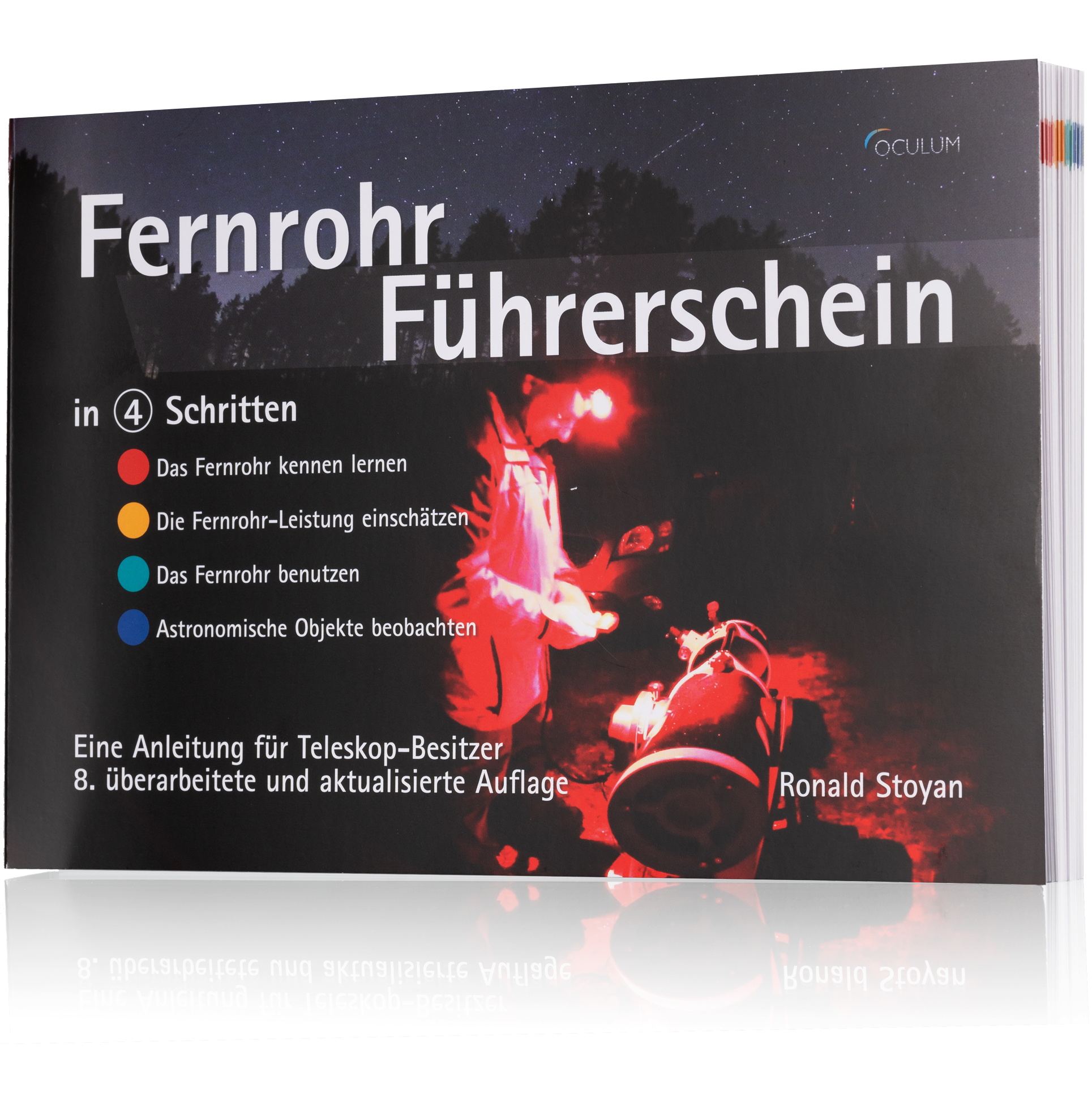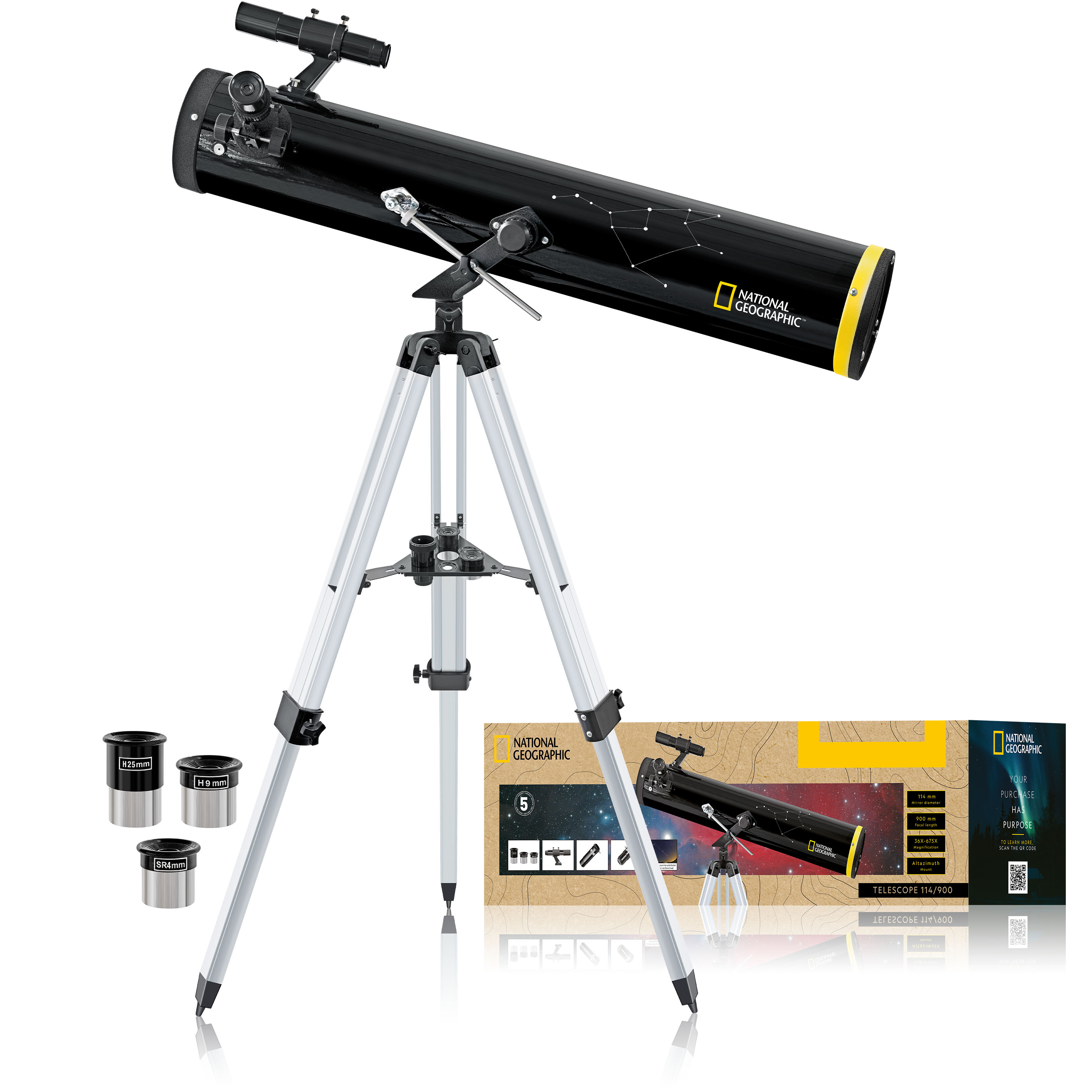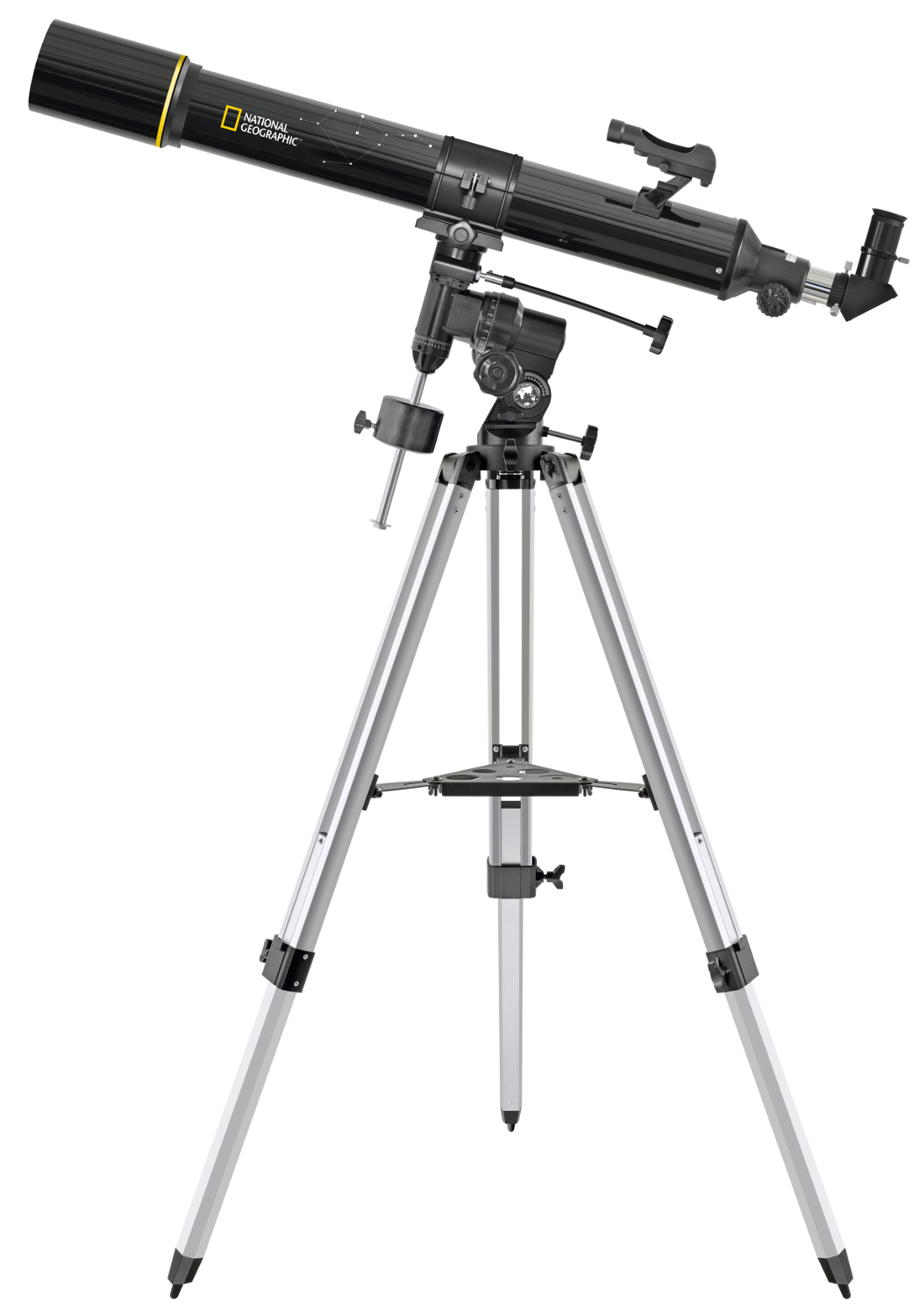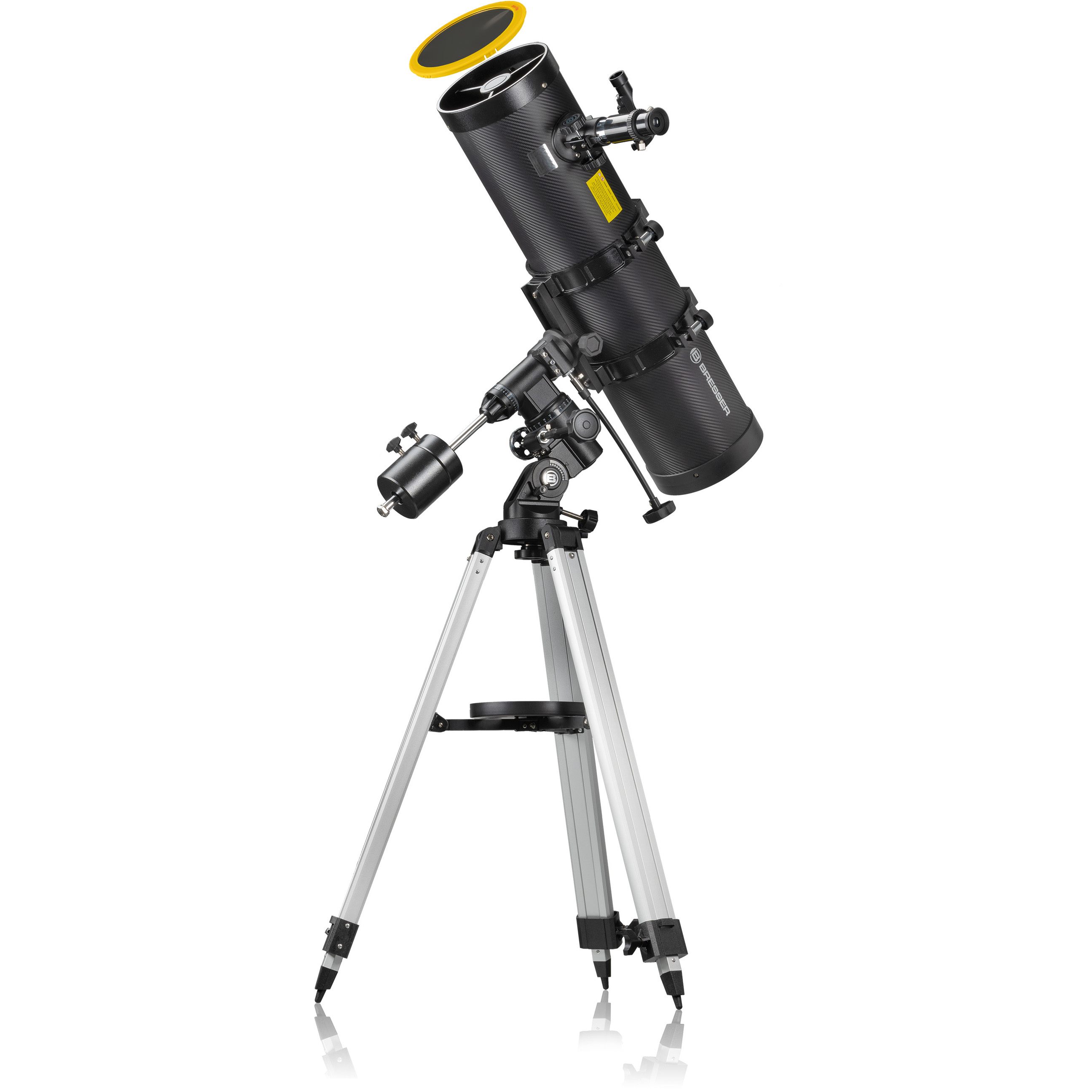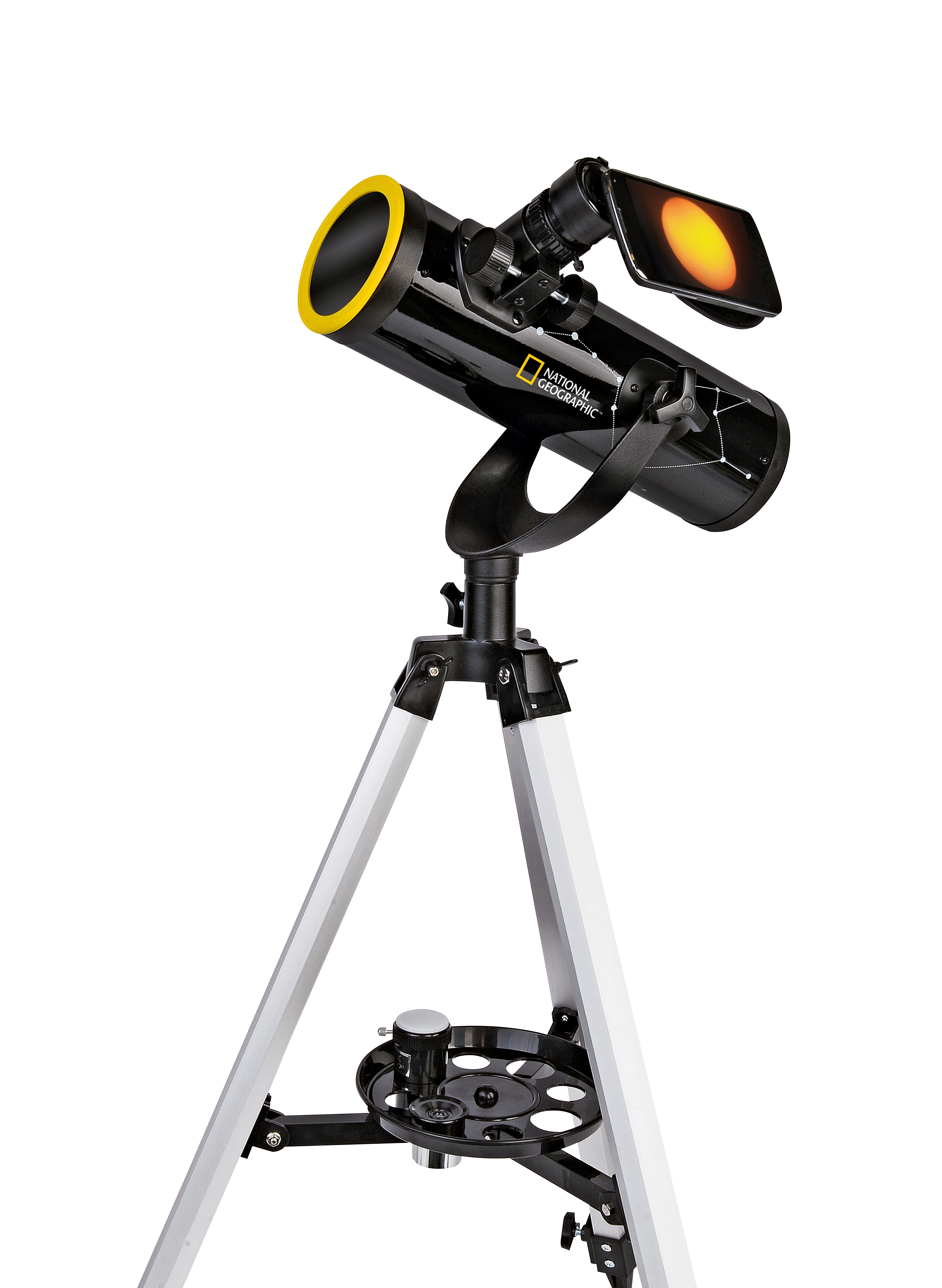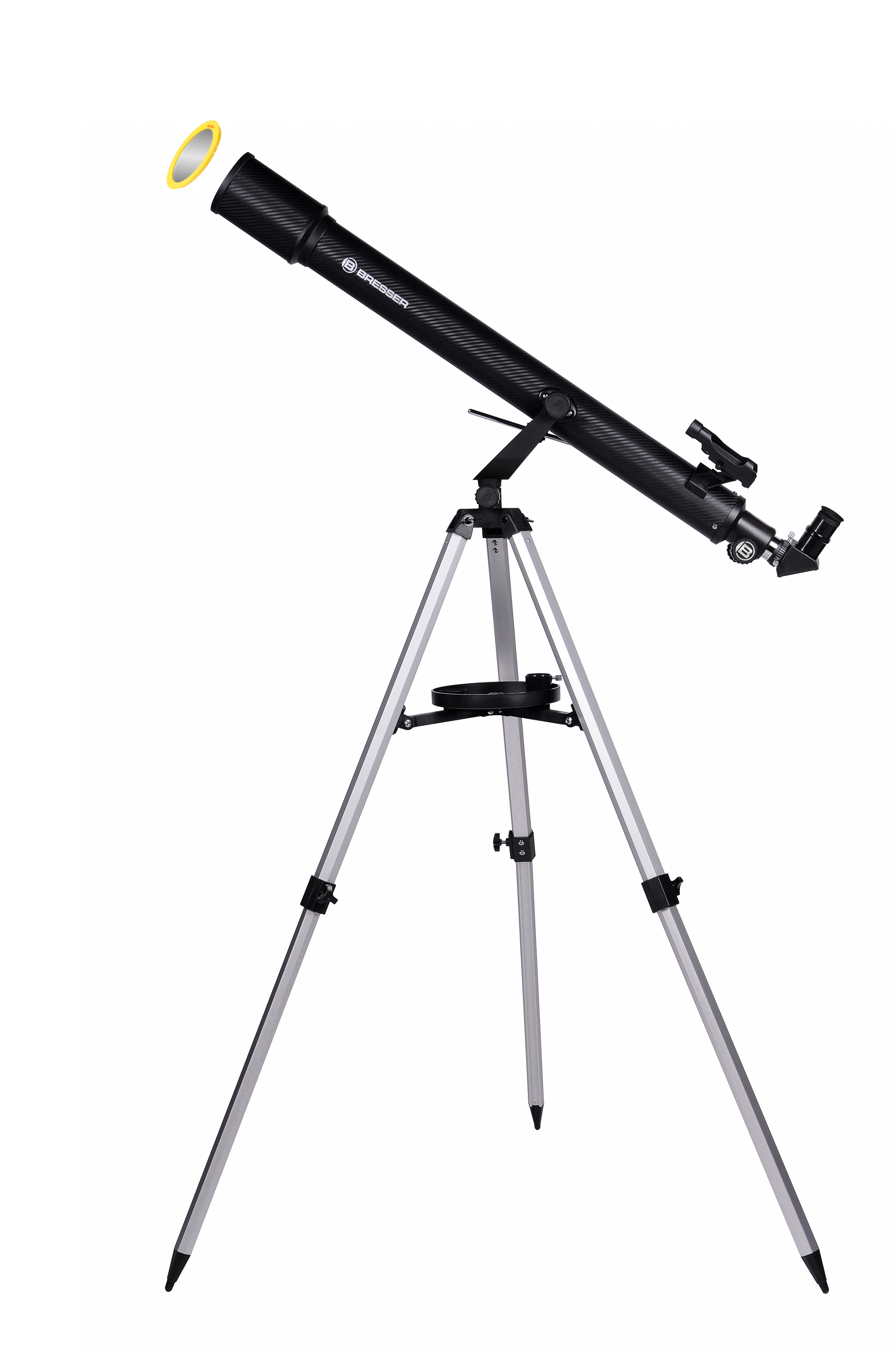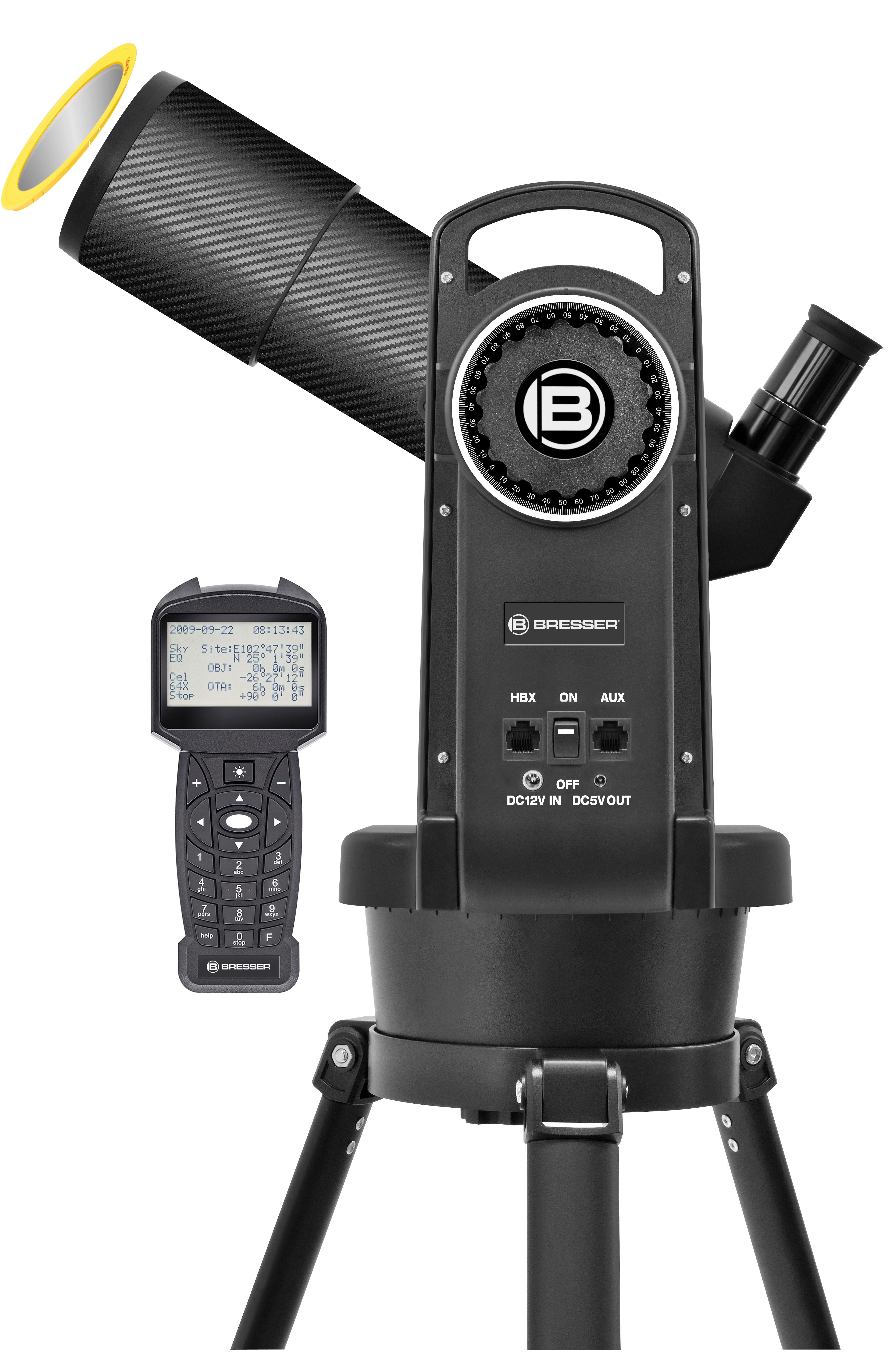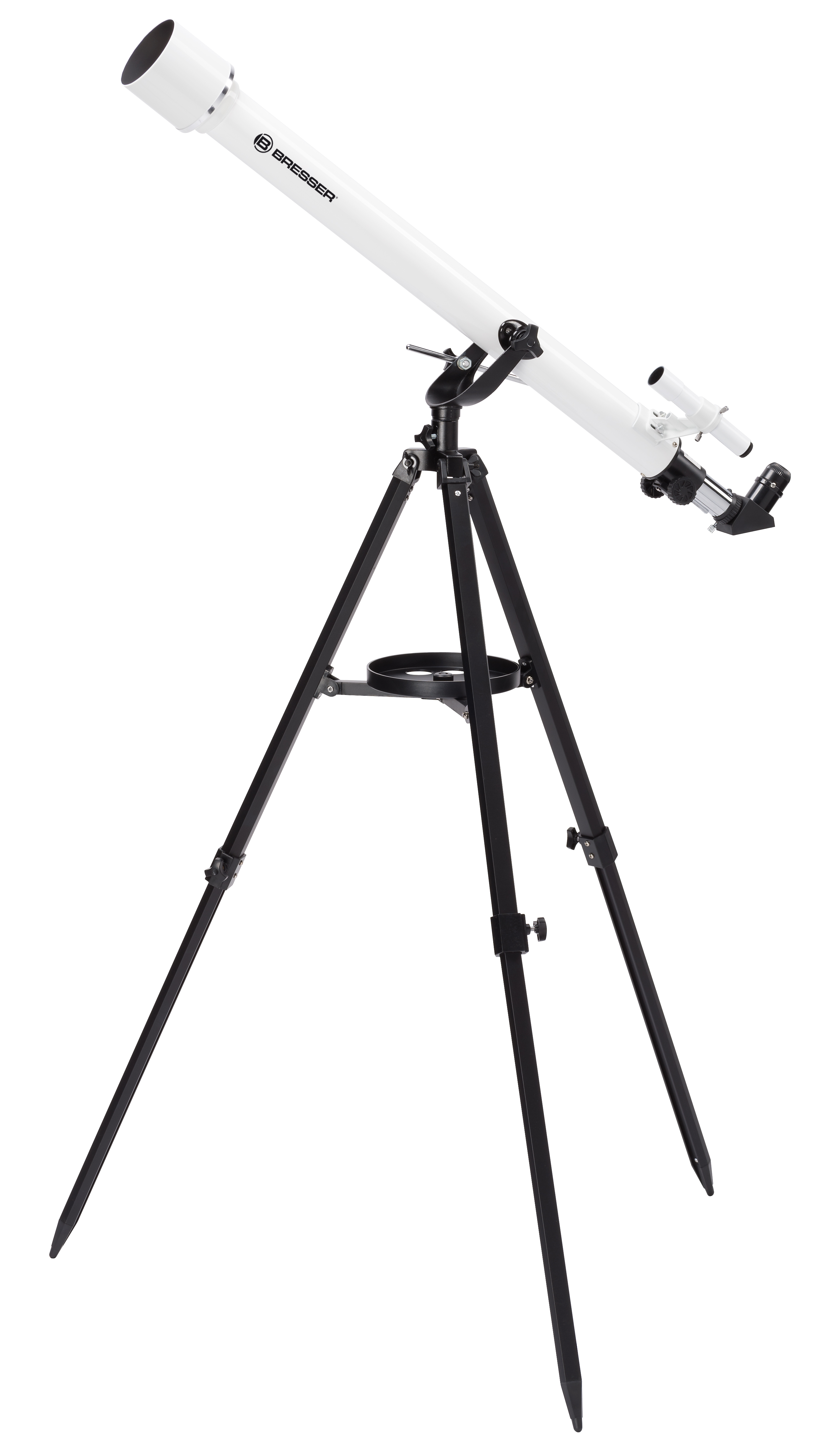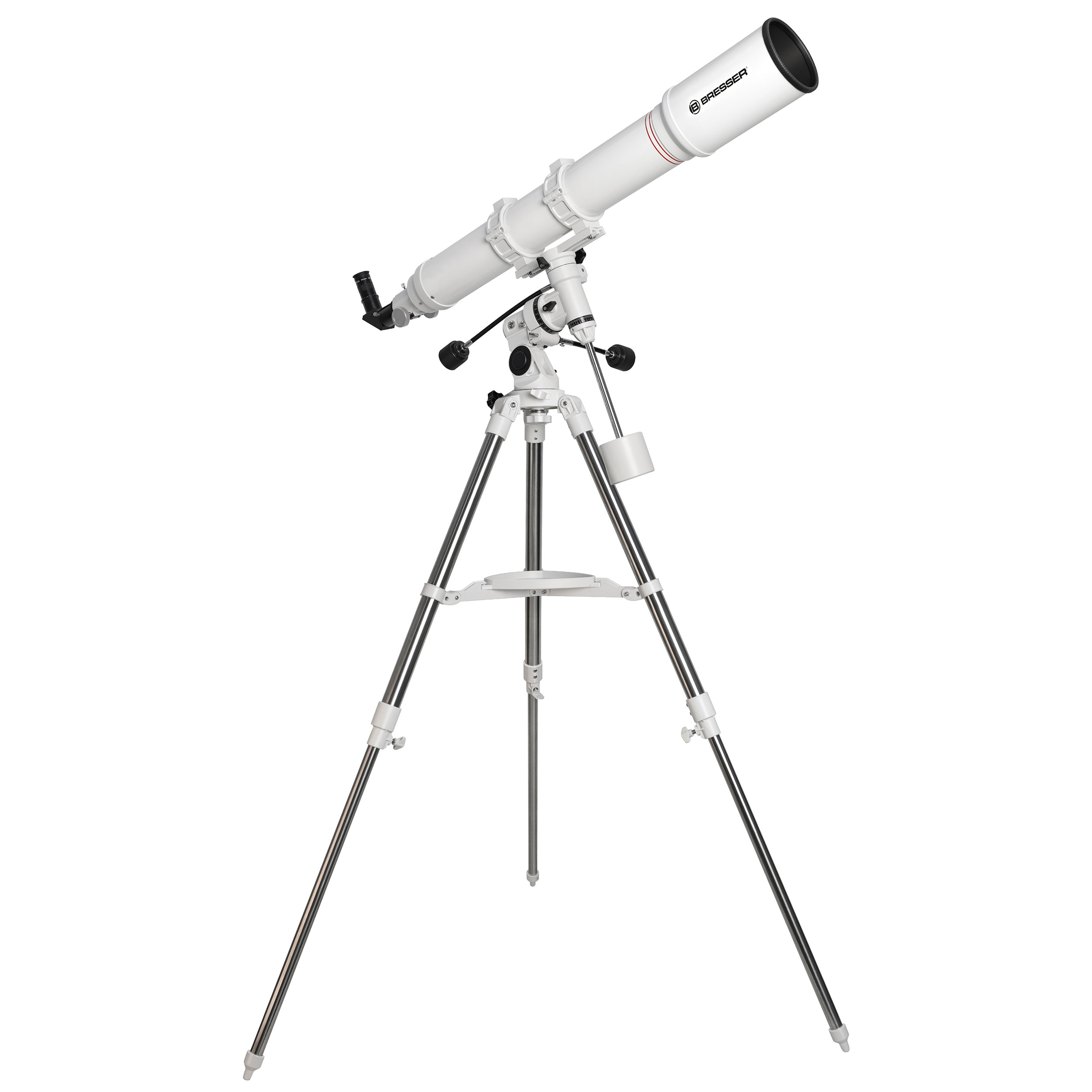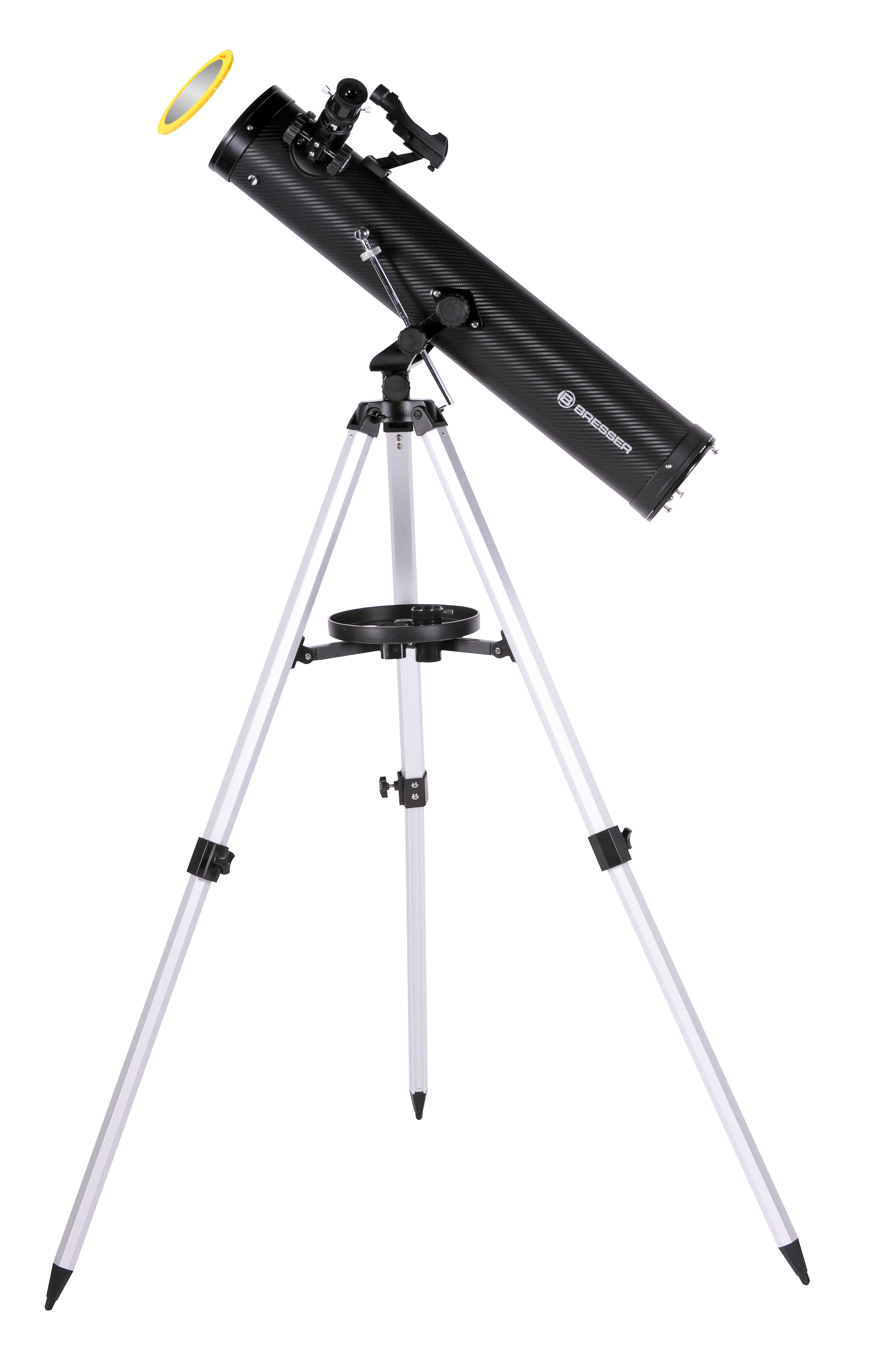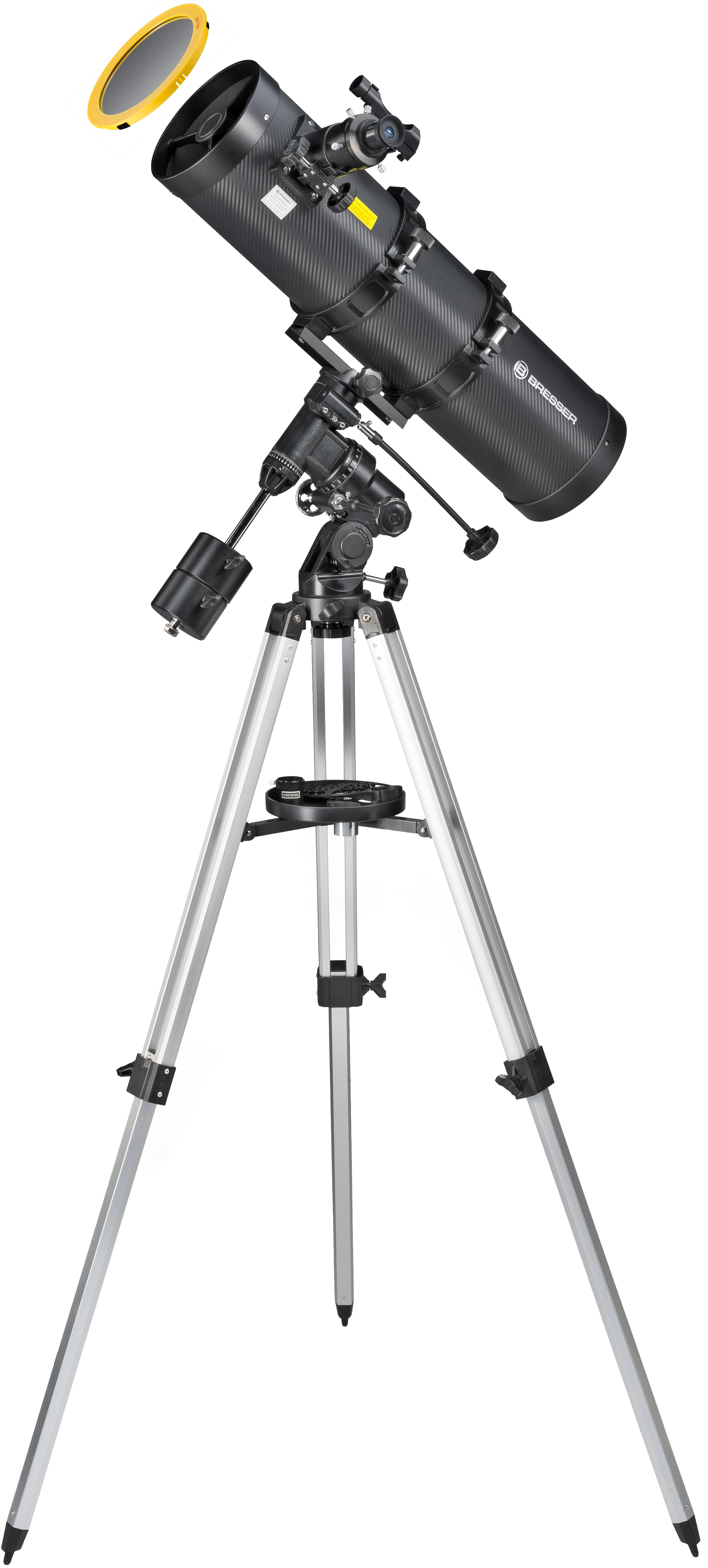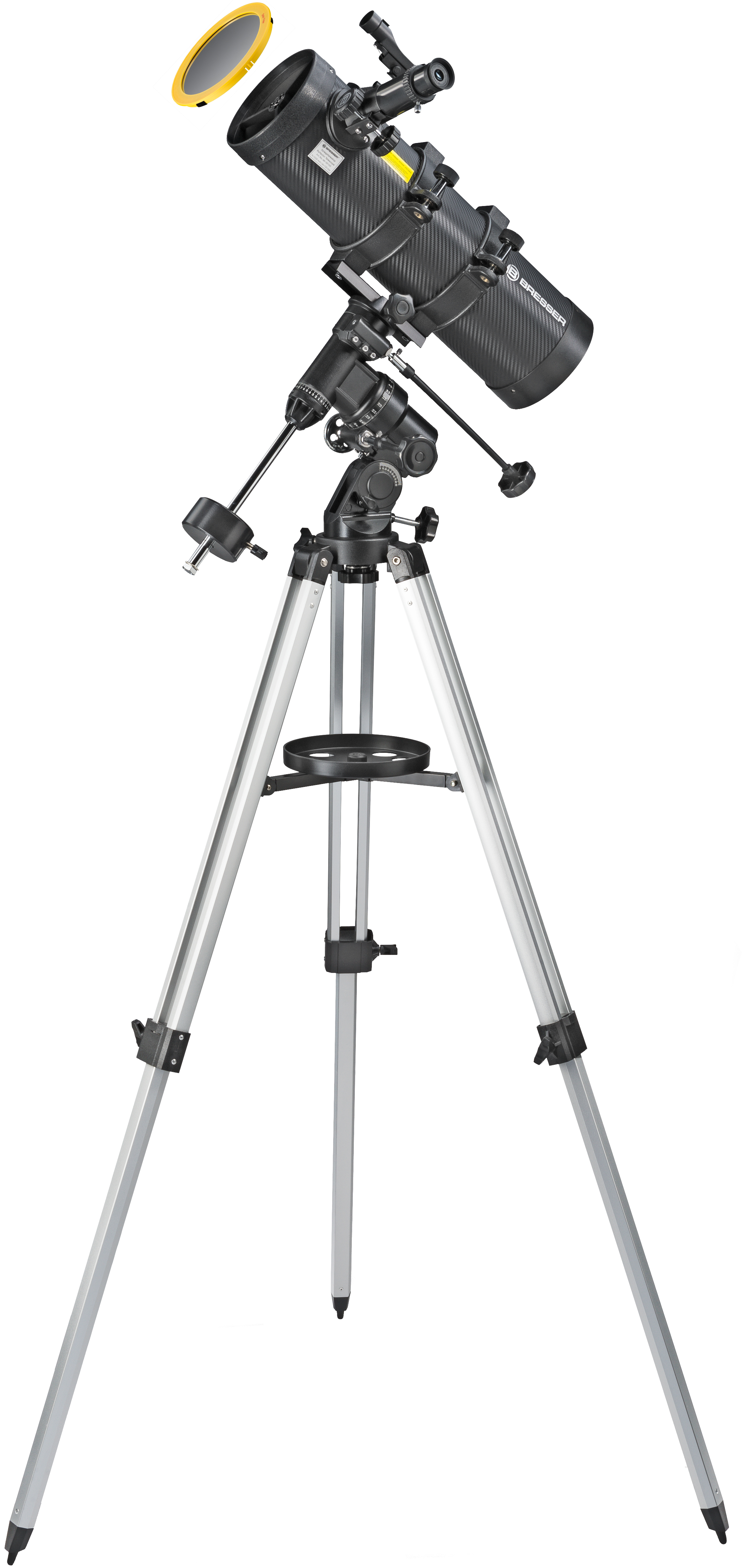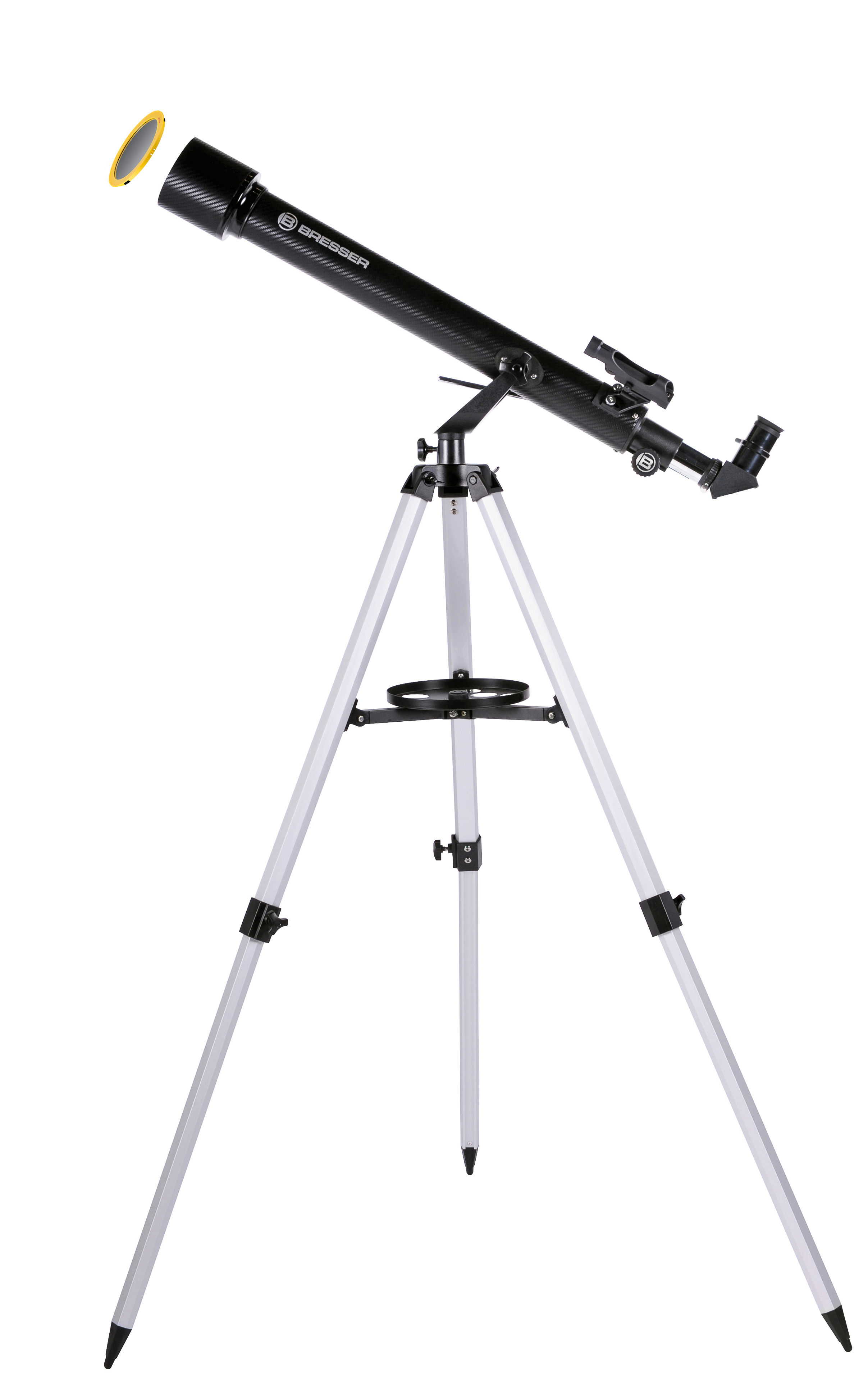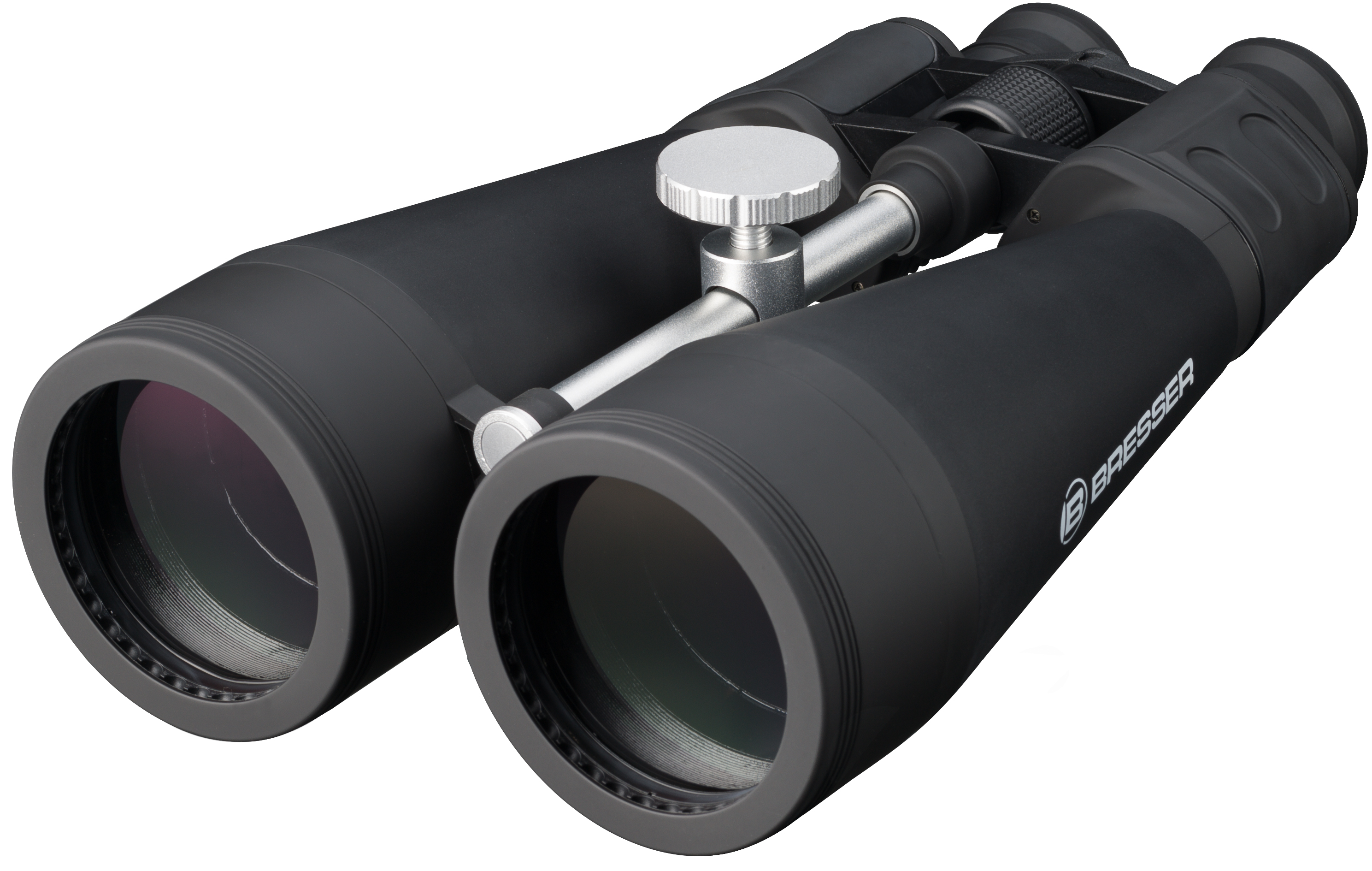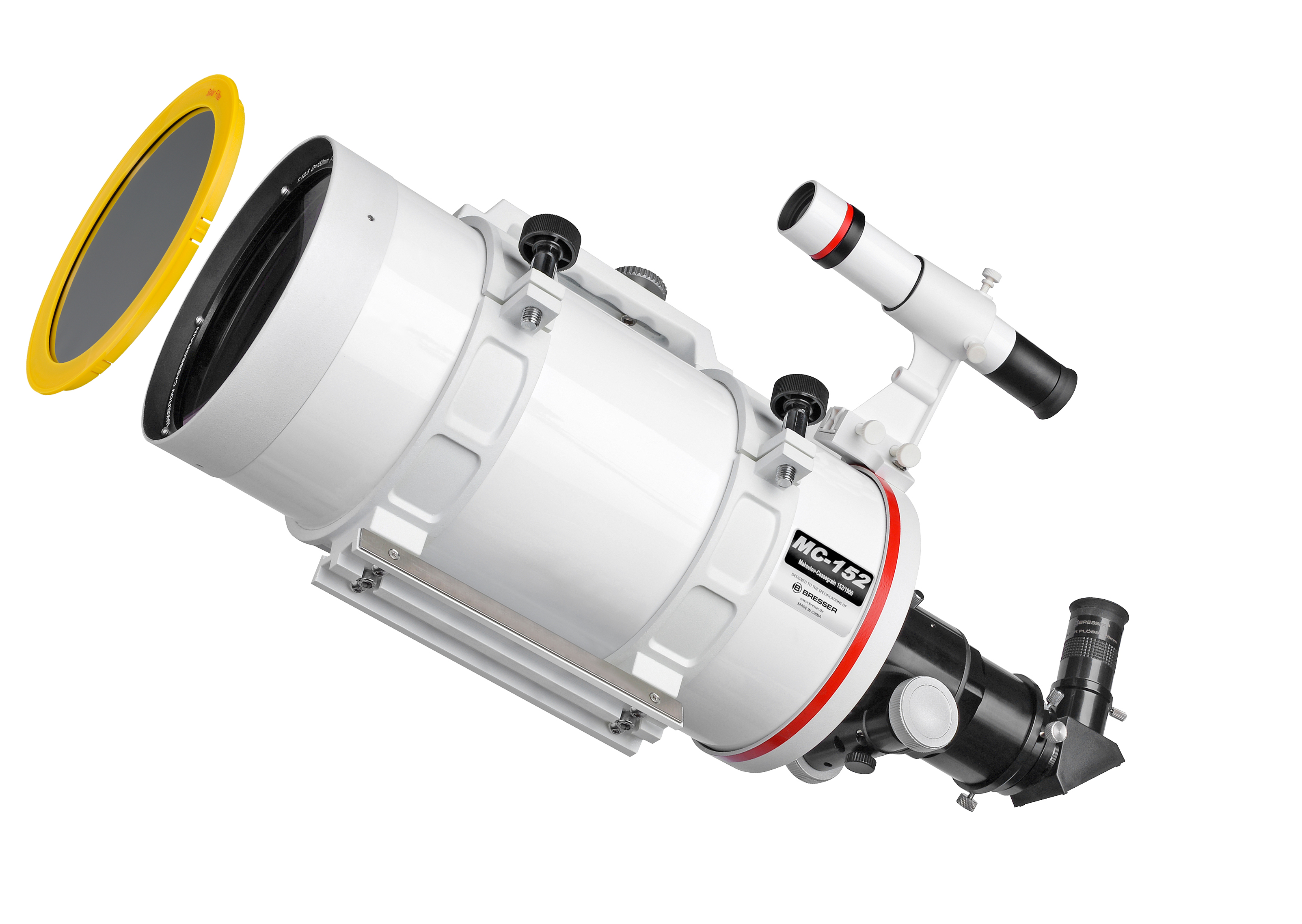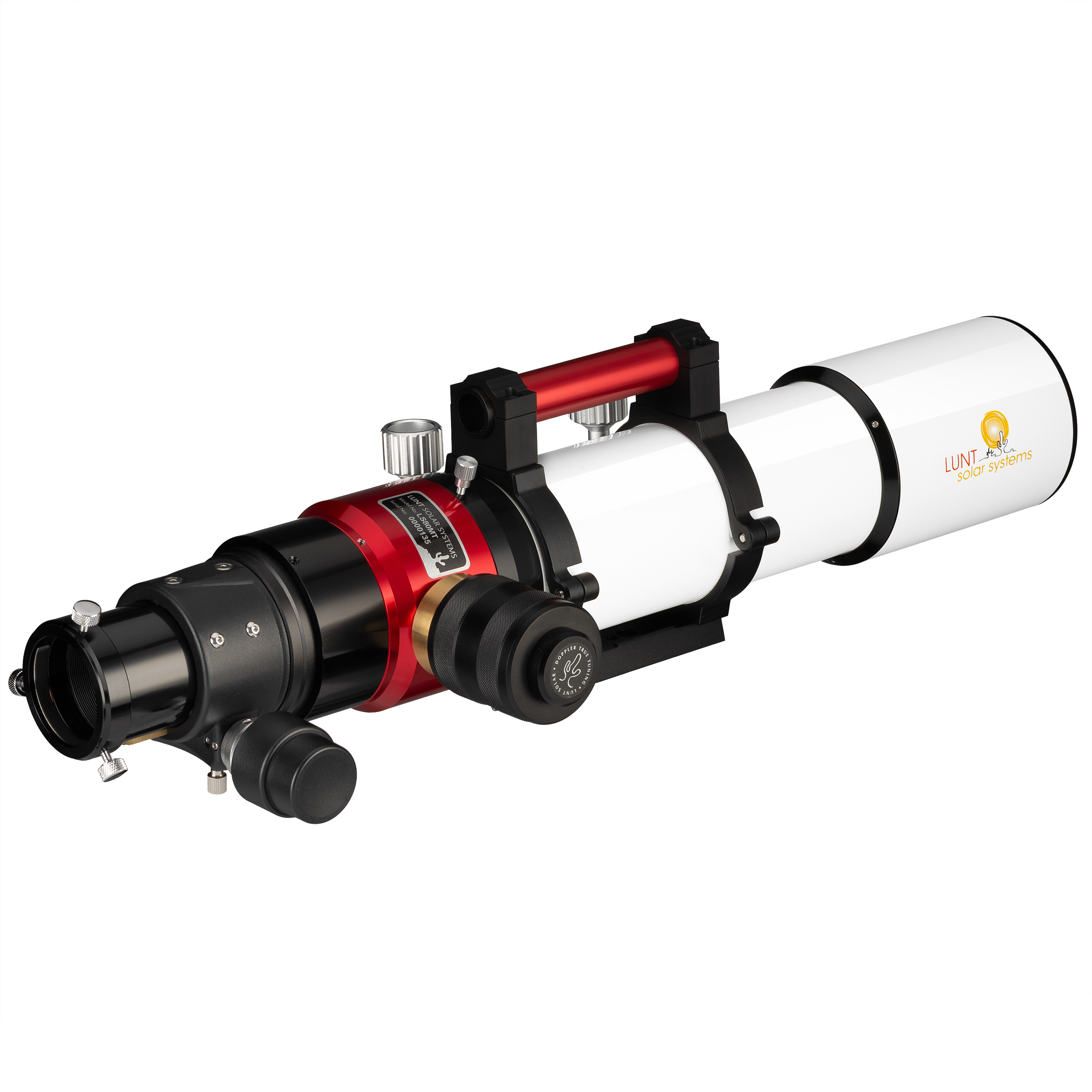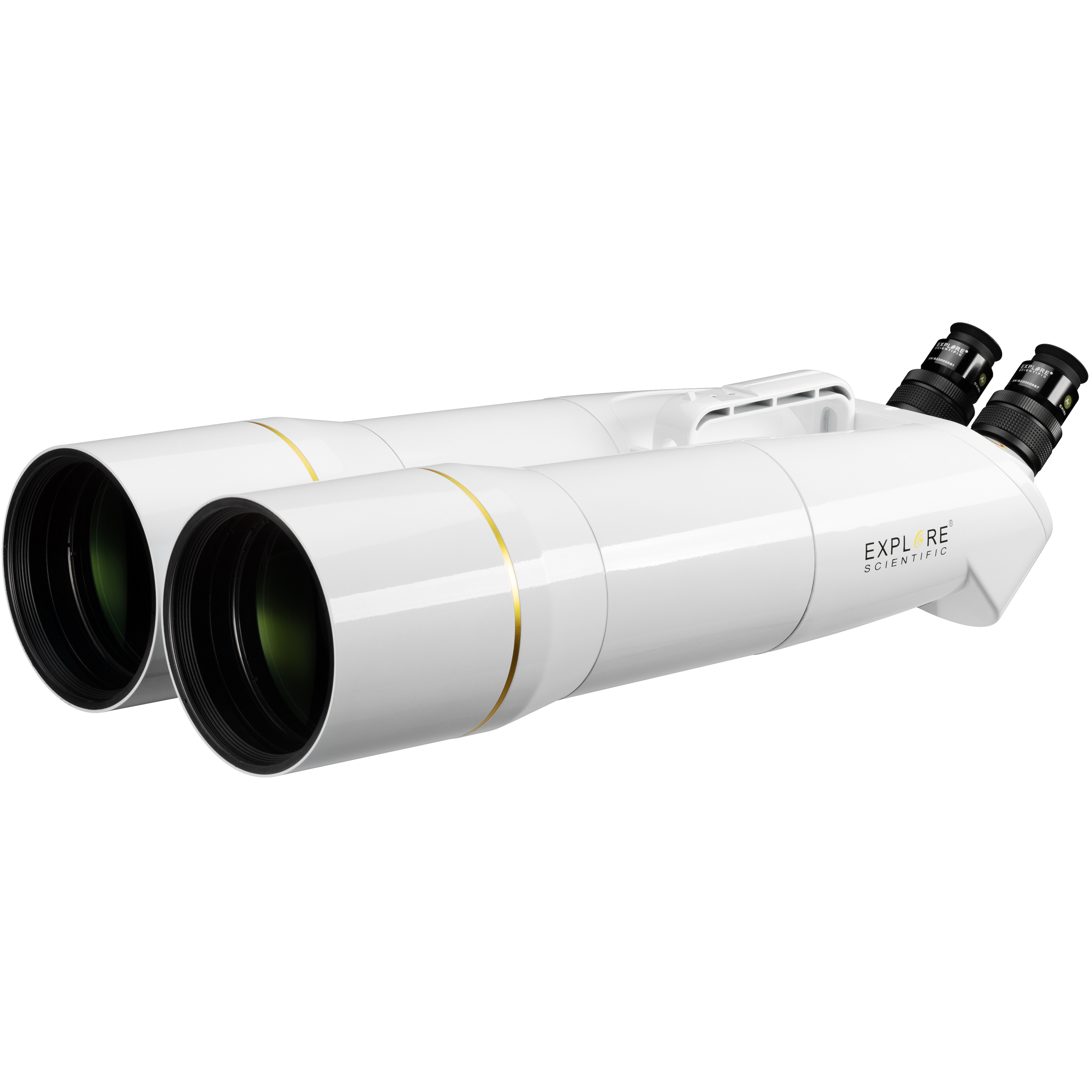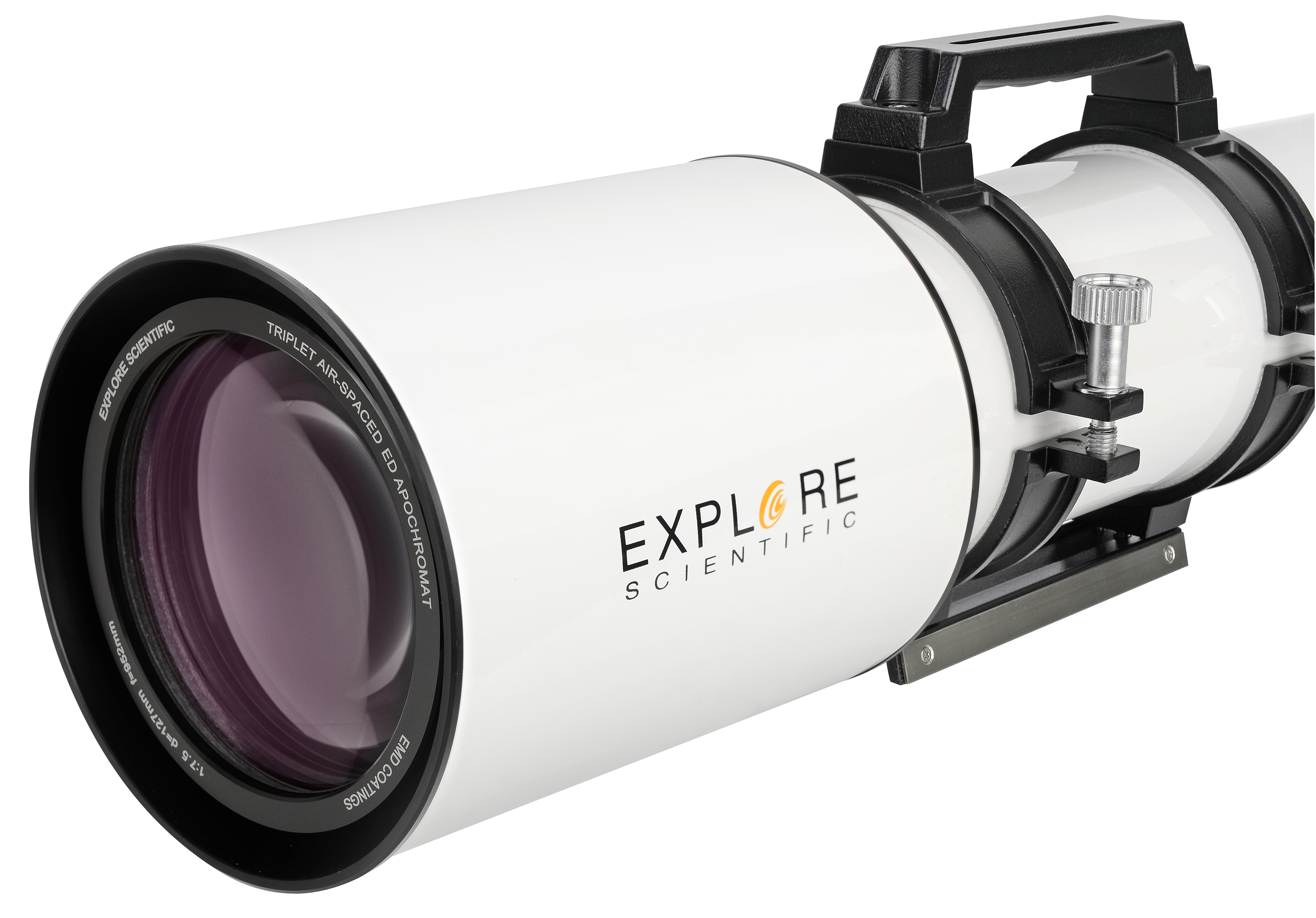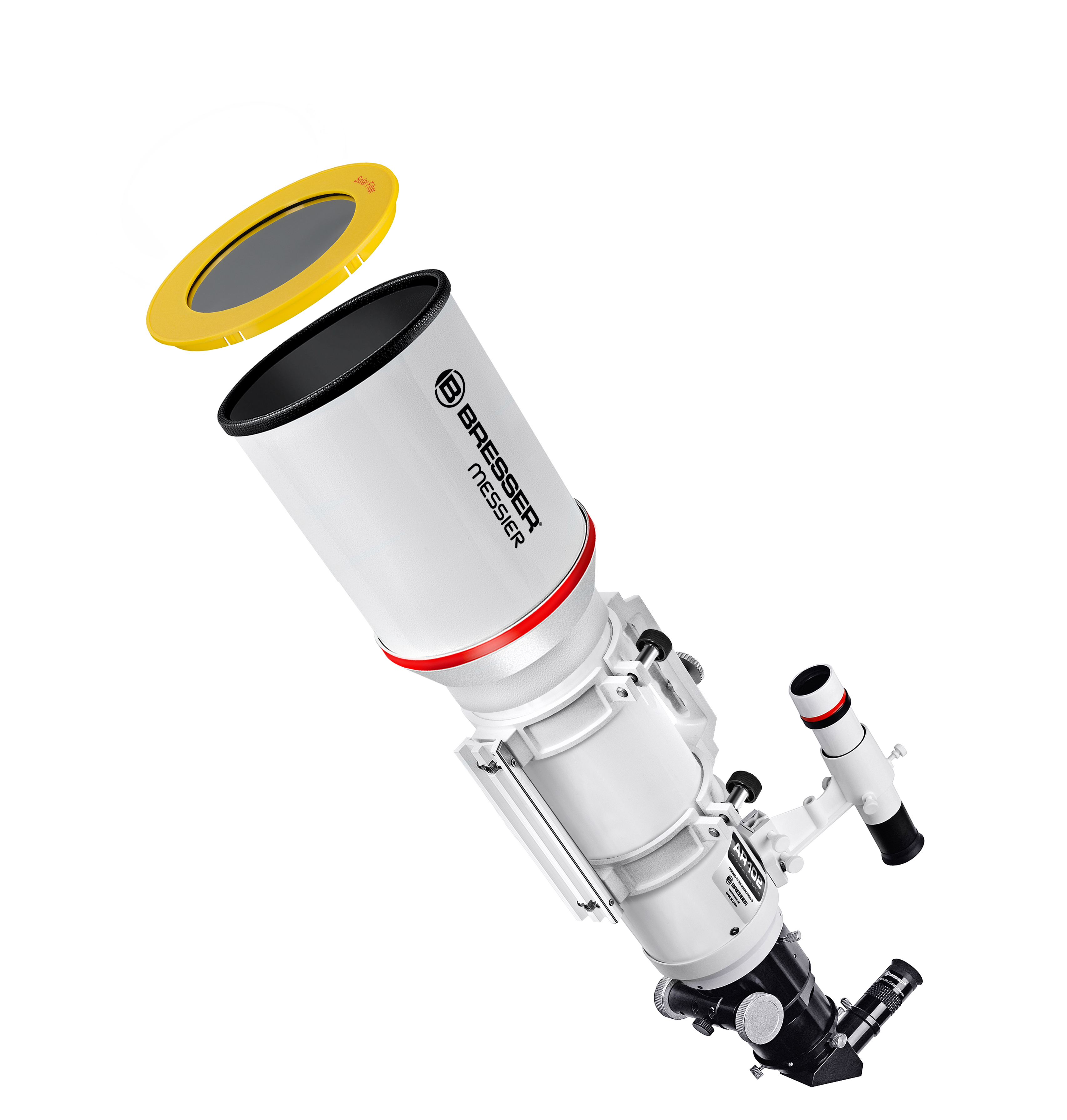























Product Highlights
High quality achromatic lens telescope ( OTA only ) with objective solar filter
- High quality refractor telescope with stable HEXAFOC focuser
- D= 102 mm; F=600 mm; F/D= F/5,9
- Handle with integrated camera holder
- 50,8 mm to 31,7 mm adapter with integrated T2-thread
- Content: optical tube AR-102/600 Hexafoc + Acc.
- Aperture Solar Filter and smartphone adapter for celestial navigation included
- 6x30 optical finder with crosshair and optimized finder bracket for comfortable usage
- Length: 615 mm; Tube diameter: 104 mm; Mass: 3,9 kg
- Universal 44 mm Dovetail plate with stainless steel rail (fits LXD75/GP/EQ5)
- Telescope for Night- and Solar Observation
Testbericht über den BRESSER MESSIER AR-102S/600 HEXAFOC OPTISCHER TUBUS
von Jochen Fehmer

Ansicht von vorne auf das Teleskop

Detailblick auf den Auszug

Gesamtblick auf das Bresser Messier AR102s
Kleiner Tipp, wenn Ihr keine Heizung kaufen wollt, nehmt einfach Fußsohlenwärmer vom Baumarkt. Aber bitte die Dünnen ohne Steine drinnen. Die Dünnen bleiben dünn und steckt sie einfach zwischen Linse und Taukappe. Funktioniert super, kein zusätzliches Kabel und keine zusätzliche Stromquelle. Ist ideal, wenn Ihr mit Eurem Teleskop unterwegs seid. Für den Sucher, bzw. Guidingrohr nehmt die Handwärmer. Die haben eine kleine Klebeschicht, reicht für 12 Stunden und geht spurlos wieder ab.
Doch nun wieder zum Bericht. Zum Fokussieren nehme ich immer Polaris, denn er hat einen Begleitstern. Wenn ich den sehe und darauf fokussiert habe passt die Scharfstellung. Das klappte sehr gut mit dem Teleskop, auch ohne 1:10 Untersetzung. Gefühl ist angesagt, aber man kann für das Teleskop die 1:10 Untersetzung zusätzlich kaufen. Wenn man fotografieren möchte sollte man sich die zulegen. Die Schrauben des HEXAFOC AUSZUGS sind ausreichen groß dimensioniert, und nachdem man scharf gestellt hat und die Schraube des Auszuges festgeschraubt hat bleibt der Auszug da wo man ihn haben will. Klasse Idee mit dem Sechskant! Zusätzlich ist der gesamte Auszug drehbar, das ist wichtig wenn man die Kamera wieder ausrichten will. Ich sehe da gar keine Probleme für Kameras, auch für etwas schwerere.
Nun zur Optik: Es ist ein achromatischer Refraktor mit einem Objektivdurchmesser von 102 mm und einer Brennweite von 600 mm. Mit seinen F 5,9 ist er ein schnelles Teleskop, d.h. er sammelt viel Licht. Damit gibt es aber einen Schönheitsfehler. Bei großen Sternen, Planeten oder mit hoher Vergrößerung des Mondes sieht man Farbsäume. Mir viel auf, dass es nicht so dramatisch war wie ich es befürchtet habe, gestört haben sie mich jedenfalls nicht. Mit den passenden Filtern sind sie sowieso nicht mehr gravierend. Auf den ersten Testfotos sah ich nadelfeine Sterne. Es überraschte mich, dass ein Teleskop für 219 Euro solche Abbildungen machen konnte. Da aber der Vollmond hoch am Himmel stand, entschied ich mich für H Alpha Fotografie. Diese Art der Fotografie hat den Vorteil, dass der nicht stört. H Alpha Filter lassen nur ein bestimmtes Licht durch, dadurch werden Sterne „dünn“, Lichtverschmutzung interessiert nicht und der Farbfehler ist nicht mehr sichtbar. Ein paar Aufnahmen vom Nordamerika,- und vom Kokon Nebel. Der im Lieferumfang befindliches 6x30 Sucher ist ok bis auf die Kunststoffschrauben, ebenso der 1,25" Zenit Spiegel inkl. dem 26 mm Super Plössl Okular. Spitze ist der HEXAFOC-OKULARAUZUG mit 2,5" freien Innendurchmesser und integriertem T2- Adapter. (T2-Ring drauf schrauben, Kamera befestigen und los geht’s!) Als nützlich empfand ich den Tragegriff, bequemes Auf und Abbauen. Er wiegt ja nur 3,9 KG aber man hantiert nicht rum. Die Kameraschraube oben am Handgriff ermöglicht das Fotografieren mit Objektiven, da fungiert der BRESSER MESSIER AR-102S/600 kurzerhand als Guider. Die Klemmfläche der Prismenschiene ist aus Edelstahl, ist eine universelle. Für die Anfänger sind noch nützliche Sachen mit im Lieferumfang enthalten: Eine kleine drehbare Sternkarte, eine Teleskop Fibel und die Astronomie Software PC Stellarium.
Mein persönliches Fazit:
Der BRESSER MESSIER AR-102S/600 mit dem HEXAFOC AUSZUG ist ein klasse Teleskop. Er sieht nicht nur super aus, Mann oder Frau bekommen für überschaubares Budget eine komplette Optik die einem sehr viel Spaß machen wird. Alleine der Auszug ist das Geld wert. Eine schnelle Optik die mobil ist. Nur eine Montierung und los geht es. Visuell ist er eine Freude, fotografisch durchaus zu gebrauchen.
Ambitious beginners and advanced observers alike will see the brightest objects outside our solar system with the MESSIER AR-102. Watch details in the Great Orion Nebula from the astonishing distance of 1500 lightyears (14.200.000.000.000 km)! Scanning the lunar terminator is simply a pleasure. Scanning the Milky Way in Saggitarius shows a multitude of deep-sky objects.
This telescope is only an optical tube without mount and tripod.
FEATURES
- Optical design: refractor telescope
- Lens diameter: 102 mm / focal length: 600 mm / F/6
- Maximum recommended magnification: 204x
- Very high quality Hexafoc focuser with 2.5" free inner diameter
- 6x30 straight through viewfinder;optimized finder bracket for comfortable use
- 31.7 mm (1.25") diagonal mirror
- Cradle rings with handle and integrated piggyback camera holder (1/4'' thread)
- Universal 44 mm Dovetail plate with stainless steel rail (fits LXD75/Great Polaris/EQ5)
- 50,8mm (2'') to 31,7mm (1,25'') adapter with integrated T2 thread (optional T2-adapter ring for your camera is needed)
- Smartphone adapter for sky navigation included
- telescope for night and solar observation
SCOPE OF DELIVERY
- optical tube
- Eyepiece: 26 mm Super Ploessl 31.7 mm (1.25")
- 31,7 mm (1,25") diagonal mirror
- integrated 31,7 mm and T2 adapter
- Prism rail with stainless steel clamping surface (44mm universal dovetrail for GP/EQ5/LXD75)
- 6x30 viewfinder
- rotable star chart
- Objective Solar- filter
- Tube clamp with handle and camera holder
- Smartphone adapter for celestial navigation
- Software Stellarium ( via Download)
| Colour: | white |
|---|---|
| Dust protection caps: | Dust protection caps for front lens and eyepiece holder |
| Finderscope: | 6 x 30 mm |
| Focus Group [Telescopes]: | Advanced Amateurs, Beginners |
| Focusing system: | 2.5" Hexafoc |
| Material: | Aluminium |
| Mount Type [Telescopes]: | Optics without Mount |
| Optical design: | Achromatic Refractor |
| Product Family [Telescopes]: | Refractor telescope |
0 of 0 reviews
Login
Accessories
Similar products
Customers also bought
Customers also viewed


